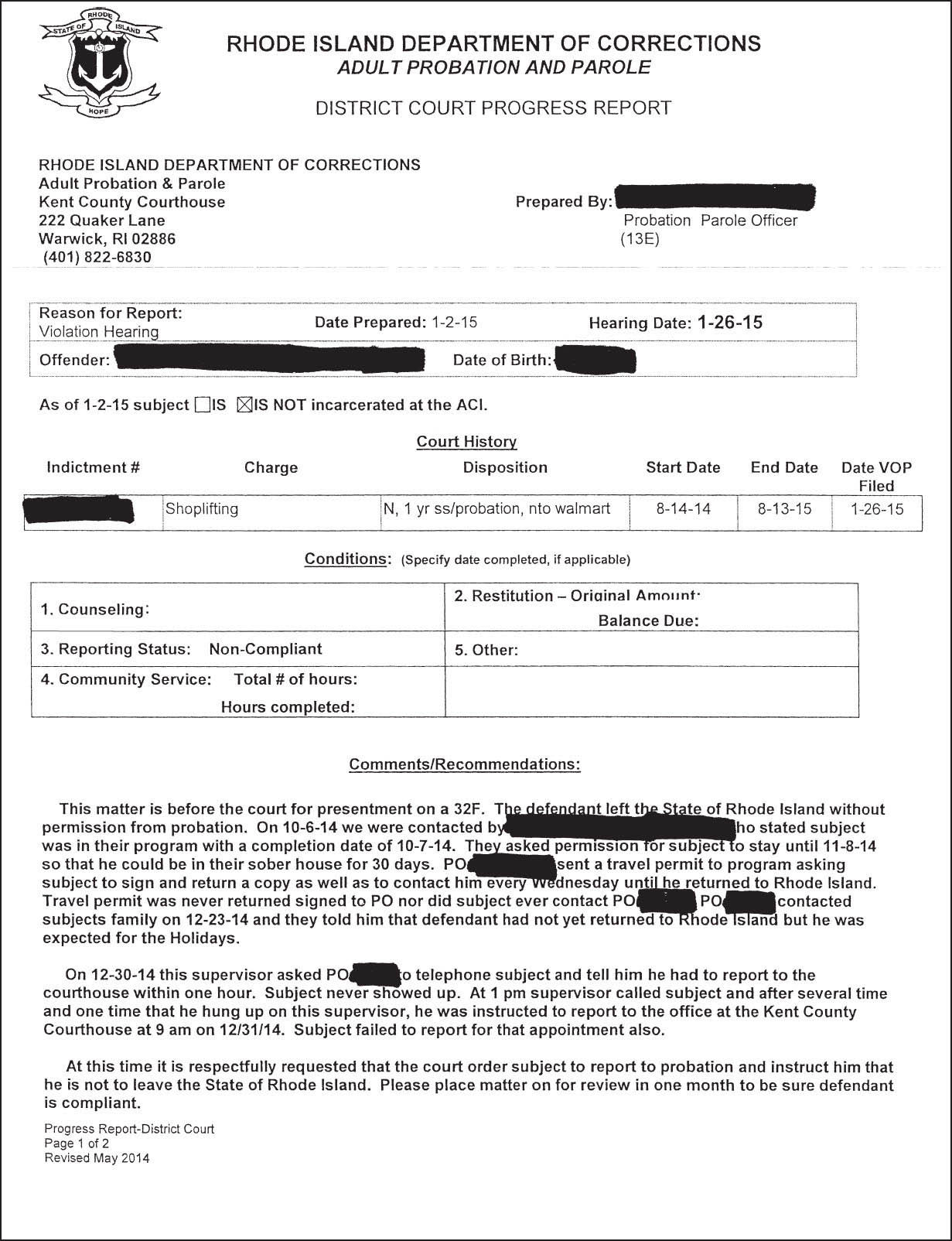1477 |
Professional Writing for Probation and Parole |
I wish that during my career as Director of Probation and Parole for the Vermont Department of Corrections our training division had at its disposal a book specifically devoted to the kinds of reports my staff were required to write. I believe that there is a cohort of students who would benefit from a book devoted specifically to writing in the criminal justice field.
—Jackie Kotkin, Former Director of Probation and Parole,
Vermont Department of Corrections
What you will learn in this chapter:
• How to write reports for probation and parole
• How to create a coherent narrative, from field notes to final product
• How to construct an argument, including attention to detail and justification of recommendations
• Specific writing for probation and parole
First, let us understand the difference between probation and parole. Probation is when a judge provides an offender with an optional sentence to incarceration. This type of sentence is usually reserved for misdemeanors and nonviolent offenses, such as petty theft, prostitution, simple assault, and first-time possession of some illegal drugs. Parole, on the other hand, means that an offender has already served some time in prison and has requested consideration for early release. For parolees, it may not matter the felony for which they are convicted; requesting parole may be achieved by nearing the end of their sentence and/or for good behavior. Their petition goes before a parole board for consideration, and it is the parole board that determines this privilege on a case-by-case basis. In both instances, writing for probation and parole perhaps requires more strategizing than writing for other aspects of the justice system. On the one hand, we seek to assist newly released inmates in their success to stay out of prison by complying with their parole or probation requirements, while on the other hand, we must uphold the legal mandates required of the job. To complicate this further, probation 148and parole officers are allowed to use their discretion when writing a report. Probation and parole officers must generally write two types of reports: violation reports and presentencing reports. For this type of writing, we will not find computerized forms with drop-down menus to complete, and we will not necessarily follow the same outline for each case. For example, with violation reports, we write about how the terms of the probation or parole were violated, evaluate the severity of the violation(s), and then make appropriate suggestions to the court for reparation, which could include returning the probationer to serve the remainder of his or her sentence behind bars. This type of report writing involves meticulous attention to detail and recording events much like a police officer. Although many violation reports are governed by federal and state laws, probation and parole officers can choose to overlook small infractions or decide to report them all. Examples of infractions that probation and parole officers write about are:
• Failing a drug screen test
• Failing to appear in court or showing up late to court
• Failing to report or call a probation/parole officer as scheduled
• Failing to pay fines or make restitution as ordered by the court
• Failing to attend counseling sessions, as ordered by the court
• Visiting people or places that are prohibited by the terms of probation (such as visiting victims or accomplices)
• Committing new crimes
Whatever we write in our violation report could result in heavy fines, an extension of probation, stricter monitoring, and other consequences including incarceration. Procedures vary from state to state, but once we submit a violation report, the parolee or probationer generally must appear at a hearing before a judge. At this hearing, the probation officer testifies to the violation(s), the circumstances of the violations, and the individual’s overall conduct and demeanor while under the officer’s supervision. Based on the probation officer’s testimony and the written report, the judge then uses his or her discretion to determine guilt or innocence of the violation, which is generally based on the preponderance of the evidence (i.e., is it more likely than not that the violation(s) occurred). Given this formal procedure, it is important to know that what we write in a violation report will almost always result in a finding against the probationer or parolee.
Another common document that probation and parole officers write is a presentencing investigation report. In this report, we make sentencing recommendations that also include an extensive background ground narrative. In other words, because probation and parole cases vary, it is likely that we are on our own when constructing such a narrative. According to Bergman and Berman (2015), interviewing skills and excellent note taking are crucial to the report-writing process. The probation officer must interview the defendant, review any prior criminal history, including juvenile history, talk to the victims of the crime, the arresting officer, and the defendant’s family or friends. The information from all of these sources needs to be concisely summarized, and the final report should include the circumstances of the offense and any personal history you deem appropriate to include. A defense attorney may also ask you to mention some favorable material in your report, such as after the conviction the defendant went to Alcoholics Anonymous meetings or sought therapy of some kind. What you write will certainly impact the judge’s decision on sentencing, as they typically do not have time to investigate individual cases. You may even want to ask the defendant why he or she thinks 149probation or some other lenient sentence is deserved. According to Bergman and Berman (2015), a solid presentencing report should include the following information from the defendant:
• Their version of the criminal act
• Their motive or reason for the crime
• Their past or present alcohol or drug use history
• Educational level
• Employment history
• Health, including any mental health concerns
• Financial status
• Prior criminal record, including juvenile record, if any
• Military record, if any
Another substantial section of a presentencing report you may be required to write is the identification of sentencing options based on what you discovered during the interview process. If you think it is warranted, you can suggest an alternative sentence that may include things like treatment centers, group therapy, home confinement, community service, going to school, assisting with job placement, or various forms of restitution. Remembering that the judge is relying on you to make appropriate recommendations in your report means that you need to be on top of your game. Use your metacognition and cultural competency skills to write a report that is objectively based, concise, clear, and as complete as possible.
In this chapter, we trace the steps of creating a violation report for probation and/or parole, from field notes to final product, keeping in mind that we must adapt this approach to each situation we encounter. Writing effectively for any occasion is best achieved when we think about writing as a staged process. The first stage of the process begins with the research phase. Research refers to the need for the writer to gather information either from his or her own accounts or from other reliable sources. We will already have some basic information on the parolee or probationer from our files, but other information we must collect ourselves. The common format is always to write on the who, what, when, where, how, and why questions of an incident or incidents that will become the basic building blocks of our report. It could be something as straight-forward as the probationer failed to call in, missed a curfew, or did not report to work, or the violation could be more complex and much more serious, such as having possession of a weapon or committing an alleged assault. The crucial first step of the staged writing process is to find out the facts of the incident and then to organize your notes. Effective notes need to make sense later that day, or perhaps in 6 months, but when you need information that makes sense, your notes will either make or break this initial writing process. Detailed notes provide information that you will use to fill in forms and later to write up a more detailed narrative in the form of a report. Keep in mind that in many instances, your first draft will be sent to the defense attorney and the defendant for comment. Once they have had the opportunity to read and comment on it, your task will be to revise it. Your precision the first time around will save you valuable time later. Also, it is important to know that the defendant and the defense attorney have the option of submitting a formal rebuttal, or objections, to your report that they will submit to the judge.
150The narrative function of your report must be concise and clear, but with the right balance of clarity and brevity. Remember that you need reliable sources of information to draw from, and this will come from your notes. We cannot emphasize this point enough: Do not rely on your memory of an event or conversation. Keep a pen and a small notebook handy, or perhaps a digital device that will allow you to jot down thoughts regarding an event that you must report on. A voice-to-text option may be of benefit in this regard. A best practice is to begin by erring on the side of too many notes rather than too few. Too many notes is not a problem—you can edit things accordingly in the report. Too few notes, however, will leave a report full of gaps and generalizations. If you can, strive to leave aside language that indicates judgmental thinking or jumping to conclusions. If you find judgmental language in your notes, be sure to revise your language when you complete your report. Your report should be as objective and fact based as possible.
First Stage: Notes
In the next writing challenge—the Probation and Parole Narrative—we invite you to practice using notes from a probation and parole case in order to craft a coherent narrative. How do you move from notes to a draft of a narrative? Remember that the narrative portion of your report requires a beginning, a middle, and an end (like any good story) so in this case—and in most cases—examine your notes and organize them into a logical outline of sorts that will serve as a scaffolding for your narrative. Begin by thinking of a chronological outline; switch to some other framework, such as strengths and challenges, if chronology leads to confusing presentation of information.
In the note-taking and organizing phase, your first task is to gather (or perhaps verify) basic information about the case you are reporting on. Be sure to have a good handle on the fundamental information like a subject’s name, residence, age, and location of the subject. Next, be sure to have detailed information about what happened that would cause you to write a report. Where were you? When did it happen? Who was involved? How did it begin? Is the current problem part of a bigger issue? How did you get involved? What did you do? What did you say? Was there anyone else present? Did anyone else act, or speak? As soon as practical, make thorough and detailed notes. Again, beware: Do not rely on your memory of the event in question—get the information written down as soon as possible.
When you write notes, or soon thereafter, try to organize them around certain key terms or categories so that even your notes will begin to take a narrative shape. Complete your notes when they are the freshest and closest to the events in question; capture them early and you will succeed down the line when it comes to writing a formal report for your supervisor and/or the court that is detailed, well-informed, and complete.
Unlike arrest or use-of-force reports, probation and parole reports do not always use chronology as an organizing framework. Rather, sometimes a narrative should unfold logically according to what happened most recently, and then move to previous information as back story. You may begin with one outline in mind, but later change the order of information as you organize your thoughts and discover for yourself that key point of the event that you believe to be the primary issue at hand. As in all writing, think about 151how the reader will absorb information and arrive at a picture of the scenario and events reported.
Beware of judgmental or abusive language even when events seem to invite condemnation of someone’s actions. What seems obvious to you in the moment often becomes less obvious minutes, hours, days, and weeks later. If you find it difficult to separate judgment from your writing, keep working on it as a basic commitment to the principle of fairness and impartiality. Once you are able to separate personal feelings from the tasks at hand, your notes, and indeed your work, will rise to professional quality. Also avoid generalities and undocumented summarizations. For example, if a person appears depressed or tense, explain the evidence rather than just using subjective descriptors. If you think a family is dysfunctional, provide the reasons for your judgment; do not include assessments without explaining your reasons.
Notes require the simplest, most direct language. Choose the words that best describe what you saw, heard, and did. Just by doing our job with mindful awareness prepares us to write effective notes, but this is more difficult these days than in the past perhaps, if only because we live lives dogged by distractions, so we must train our minds to pay attention to our environment and stay in the moment when on the job, when engaging subjects. The goal is to maintain a safe and secure work environment, and to protect yourself and others from costly litigation.
The following exercise provides you with notes of a case that are poorly organized. Your job is to reorganize the notes in a way that makes the most sense with the information provided, and then write a draft of a report using the notes you have organized. Avoid drawing conclusions; simply present the information without adornment. Beware of personal bias and separate it from the notes and report. Whenever possible avoid shorthand in your notes, at least at first, until you develop a reliable and consistent method that works for you without confusing you. If you use abbreviations, and acronyms in your notes, be sure to write them out in your report. Use active voice so it is clear to the reader who is doing what to whom.
Probation and Parole Notes:
Notes: 7/13/14 2:35 pm
Subject has stable housing
No electronic monitoring at this time
He has lived with wife at the same address for the duration of his community supervision
Subject employed. Full-time at Gas’nGo/auto technician--past 15 years
There are currently no identified problem areas. Subject will comply with any and all recommendations of substance abuse assessment
Subject has no history of violations
Subject has a history of compliance. Reports monthly. After hours. Spot visits done successfully
Knuckle cracking AF.
Registered pedophile. Repeat perp. Registers annually at Troop 17
Still drinking. Subject completed sex offender counseling, claims “successfully”
Alcohol there too. Sobriety key. Smells bad. Looks like a bum. Really?
No one can say if he’s had any contact with minors. He says no. Parole has no knowledge. Perp’s daughter is now adult. They still see each other! Docs okayed the contact, SOT. They say he’s better now. Doubt it. He’s nsf. Lol.
152EXERCISE Organize Field Notes Individually
Work individually to organize the aforementioned notes. Create an outline that indicates what information comes first, second, third, and so on. Sort through the information and determine what you might include and exclude in a report. Is there enough information present? What, if anything, may be missing? Are there any examples of judgmental language or personal bias?
Second Stage: Moving From an Outline to a Report
Once you have created a functional outline, you move on to the first draft of your report, using the outline as your guide for organizing information.
EXERCISE Revise Narratives Collaboratively
Draft a one-page, double-spaced Probation and Parole Report based on the outline you developed. Share draft reports, either with the entire class or in groups of three to four. Respondents should pay careful attention to the logical flow of others’ reports, and note any questions, reactions, and/or suggestions. Listen carefully to the feedback you receive. Everyone should take a turn reading his or her work, as well as listening carefully to others and offering feedback. This exercise allows you to try out different ways of writing a narrative and to find out how others have solved the problems you attempted to solve. Use the previous information in this chapter as a guide to determine what you or others got right, and where, perhaps, you may still need to improve your work. Though reading our work out loud before others can be intimidating, getting used to this stage is important if you are to successfully write for the professional audience who will be reading your reports. Finally, listening to how others engage in the writing process is a learning experience for all.
In class, make a list of the lessons learned from this exercise for constructing your original field notes. Make a list of guidelines to help you when you are in the field. There may be variations among students, because each of you brings different strengths to the process. But each student should exit this exercise with his or her own guide for taking and organizing field notes.
Stage Three: Drafting the Final Report
The third and final stage of the three-stage report-writing process offers you an opportunity to improve the surface features of your writing, like spelling, grammar, and punctuation. Though this improvement comes late in the writing process, remember that it is the first thing your reader will see about your work. The example that follows invites you to work on the overall narrative in order to improve it, but then take it to the next stage and, once satisfied with content and flow of the report, correct it in order to improve the surface features. Sometimes an improvement might require you to delete a word, line, or paragraph, while at other times improvement may mean you need to find more precise 153and professional language to translate the shorthand information in your notes into a full paragraph, or even more. You may need to find a way (if possible at this stage) to gather more information. Consider the draft narrative in the following exercise—it has a fairly long way to go. As you read it and look for ways to improve it, consider the following format suggestions:
• Paragraph 1: Who is this report about? What does the reader, perhaps a judge, need to know first before proceeding? Does the report form require addresses and phone numbers in the narrative, or is there somewhere else this information should be reported? If you include this information in your narrative, the first paragraph is a good place for it along with who is the subject of your report.
• Paragraph 2 (or more): Include information about the case your reader needs to understand the issue at hand. Next, clearly state the issue that has made you file a report. Use active verbs so that the reader understands who is doing what to whom.
• Final paragraph: Indicate the reason for the report and case status and administrative recommendations, if any.
Spend about 20 to 30 minutes revising the Parole Supervision Report that follows. Although it contains information, the report looks more like notes than a fully realized report. Do your best with the information provided in this draft. Can you make it more accessible to the reader? Is there something implied in this draft that you can make more explicit? Even basic formatting errors make drafts difficult to read. Be sure to correctly format the report in terms of paragraphs and spacing.
Final Review of the Narrative
When you are ready to commit to a final draft of your report, save time for a final stage of report preparation. Although it may seem like three or four distinct drafts is a lot to do, once you develop a way to apply these stages in your report writing process, you will discover that with practice you become more efficient at producing higher quality work at each stage, thereby reducing the overall time it takes to produce professional quality work.
The following example offers a short report that is almost ready to be submitted. See what you can do to improve it so that it conforms to the rules of standard written English. Remember: your goal is to write in error-free standard written English, so always write in complete sentences. Avoid sentence fragments because fragments are just that: fragments, shards, a piece of a thought that you had—but your reader needs the complete thought—a complete sentence—in order to understand what you are communicating in your writing.
The report that follows needs work before it is ready to become a permanent part of this case, but it is a pretty good draft. Do your best to make it better; make it more accessible to the reader—a reader like you or a reader for the courts—who may need it, even rely on it, as an important source of information. Good writers are good readers, so read the report carefully. First consider its overall organization. Does it feel like the report unfolds the narrative in the right order? Is it clear and balanced, or are there gaps that need information? Revise and correct for any organizational challenges the current draft contains, if any. After you settle on the overall organization of the narrative, be sure the language is as specific and consistent as it can be. Do you find any judgmental language in this draft? 154There is also the frequent use of the passive voice throughout the report. Frequent use of the passive voice tends to add a level of ambiguity to writing, a kind of fog. Locate the sentences written in the passive voice and rewrite them using the active voice. If you are not sure how to identify the passive voice, now would be a good time to visit Chapter 11 in this book for help recognizing the difference between passive and active voice.
Finally, work on correcting any and all surface issues in the report including spelling, punctuation, and any other formatting issues including how to write the day, month, and year correctly and consistently. Mastering these habits now means efficiency and quality later.
EXERCISE Correct the Writing in This Probation and Parole Report
RE. ______________________ (Defendant’s name and identifying information)
Date ________________________
Written by:___________________ (your name)
The terms and conditions of probation were violated:
No compliance with court ordered sex offender counseling. ,. He has failed to keep probation informed of his whereabouts, fails to abide by sex offender registration guidelines, and had failed to report to probation as required.
Subject has a chip on his shoulder and is a repeat sex offender, he is considered the highest level of risk to the community. Current risk level assessments indicate defendant remains at the highest level of risk to re-offend with a sexual and/or violent offense.
Defendant was released from the state prison following a 10 month sentence for his third Failure to Register on 10/1/10. He reported to probation on 1/29/11 as required. On this date, subject was referred back to his original sex offender treatment provider, SafeHouse, and was directed to immediately re-engage. Defendant has failed to do so, has not attended any sex offender treatment sessions since his release.
Defendant was directed to report on 8/3/11. He failed to do so and made no efforts to contact this supervising officer. On 8/6/11 and 8/9/11 probation attempted to contact defendant via telephone but defendants cell phone was not accepting incoming calls.
On 8/28/11 probation finally made contact with defendant via his cell phone, he admitted to this supervising officer that he has not resided at the above address since 8/13/11, despite dishonestly being registered at this address. Defendant refused to provide probation with his current whereabouts or any valid address. He indicated he had been staying at various locations and admitted he had failed to keep both probation and the court apprised of his whereabouts; as required. Defendant was directed by Probation to report on 8/29/11; to develop a plan to bring defendant back into compliance with his court ordered conditions and registration requirements. On 8/29/11, defendant refused to report to probation and his whereabouts remain unknown.
On 8/31/11 a home visit was conducted by PO Smith at last known address of the defendant; there was no response.
Probation is respectfully requesting that a warrant be issued and defendant be presented to the court as a violator.
155 Corrected Version
Corrected Version
Subject violated the terms and conditions of probation. ![]()
Subject has failed to comply with court ordered sex offender counseling.![]() He has failed to keep probation informed of his whereabouts, to abide by sex offender registration guidelines, and to report to probation as required.
He has failed to keep probation informed of his whereabouts, to abide by sex offender registration guidelines, and to report to probation as required.![]()
Subject is a repeat sex offender.![]() Current risk level assessments indicate defendant remains at the highest level of risk to re-offend with a sexual and/or violent offense.
Current risk level assessments indicate defendant remains at the highest level of risk to re-offend with a sexual and/or violent offense.![]()
Defendant was released from the state prison on 10/1/10,![]() following a 10-month
following a 10-month![]() sentence for his third Failure to Register. He reported to probation on 7/29/11 as required. On this date, his probation officer referred subject back to his original sex offender treatment provider, SafeHouse, and to immediately re-engage.
sentence for his third Failure to Register. He reported to probation on 7/29/11 as required. On this date, his probation officer referred subject back to his original sex offender treatment provider, SafeHouse, and to immediately re-engage.![]() Defendant failed to do so and has not attended any sex offender treatment sessions since his release.
Defendant failed to do so and has not attended any sex offender treatment sessions since his release.![]()
Defendant was directed to report on 8/3/11. He failed to do so and made no efforts to contact this supervising officer. On 8/6/11 and 8/9/11 probation attempted to contact defendant via telephone but defendant’s![]() cell phone was not accepting incoming calls.
cell phone was not accepting incoming calls.
On 8/28/11 probation![]() made contact with defendant via his cell phone.
made contact with defendant via his cell phone.![]() He reported
He reported![]() to this supervising officer that he has not resided at the above address since 8/13/11, despite being
to this supervising officer that he has not resided at the above address since 8/13/11, despite being ![]() registered at this address. Defendant did not
registered at this address. Defendant did not![]() provide probation with his current whereabouts or any valid address. He indicated he had been staying at various locations and admitted he had failed to keep both probation and the court apprised of his whereabouts as required.
provide probation with his current whereabouts or any valid address. He indicated he had been staying at various locations and admitted he had failed to keep both probation and the court apprised of his whereabouts as required.![]() 156Probation directed defendant
156Probation directed defendant![]() to report on 8/29/11
to report on 8/29/11![]() to develop a plan to bring defendant back into compliance with his court ordered conditions and registration requirements. On 8/29/11, defendant did not
to develop a plan to bring defendant back into compliance with his court ordered conditions and registration requirements. On 8/29/11, defendant did not![]() report to probation.
report to probation. ![]() and his whereabouts remain unknown.
and his whereabouts remain unknown.
On 8/31/11, P.O.Smith conducted a home visit at last known address of the defendant; there was no response.![]()
Probation is respectfully requesting that the court issue a warrant charging the defendant with a violation.![]()
Explanations of Corrections
1. Passive voice
2. Incomplete sentence: no subject
3. The items listed were all different tenses (syntax).
4. “Chip on his shoulder” is judgmental and summative, without any documentation or explanation of reasoning.
5. Run-on sentence (comma-splice: two complete sentences separated by a comma—should be separate sentences or separated with semicolon); passive voice; redundancies in two sentences eliminated
6. Misplaced modifier
7. Hyphenation
8. Passive voice (twice)
9. Run-on sentence comma-splice
10. Possessive requires apostrophe
11. “Finally” is judgmental
12. Run-on (comma-splice)
13. “Admitted” is judgmental, implying lying
14. “Dishonestly” is judgmental
15. Based on the information in the narrative, the fact is that the defendant did not provide the information. For “refused” to be acceptable, this report must specify that the defendant rejected or denied the officer’s request for the information. The narrative does not indicate that anyone asked, and/or that the request was refused. It is possible the defendant did not know or was not asked. Even “failed to provide” implies the defendant denied a request.
16. No semicolon. “Admitted he had failed … as required” is acceptable because the sentence specifies the conditions that defendant did not meet. There is no judgmentalism here.
17. Passive voice
18. No semicolon
19. Judgmental language
20. Comma to separate independent clause (complete sentence) and conjunction (and)
21. Passive voice. Semicolon is correct because it separates two otherwise complete sentences.
22. Passive voice
157Preparing Oral Testimony
Preparing for oral testimony often requires reviewing the written record. If there is not yet a written report, preparing a written report is the ideal preparation for oral testimony. The issue becomes slightly more complicated when some time elapses between the writing of a report and the delivery of oral testimony related to that report. Though oral testimony is often extemporaneous, possibly even adversarial, and so may seem casual or informal, oral testimony may be a deciding factor in the outcome of a case, and will become part of the permanent record, as well as a reflection on the person giving the testimony. One way or another, the quality of our oral testimony depends on our preparation and knowledge of the case. More often than not our oral testimony will be drawn from the written record, and most likely, one that we wrote. We need to always consider this as we prepare our written report: You may be helping yourself (or someone else) who will need to access your report as perhaps the only source of information about a pending case. Oral testimony should be as informed, as specific, and as well-organized as the written report. Your oral testimony should:
• Begin by contextualizing the case under review; be sure to specifically cite the person or persons involved, the date and time of the report event, and how you came to be involved
• Provide a chronological outline of the client’s activities and the events that led to a written report, and now your oral testimony
• Indicate where things were left as of the official written report
• Provide recommendations or actions taken
The following exercises are intended to help you work with and understand the relationship between a written record and oral testimony. Whether you or someone else prepared the written record, the report may be months—many months—old by the time you may need to testify about it. Never rely on your memory! A well-written, detailed report will jog your memory and help you prepare for oral testimony. Cases have been dismissed or overturned because the written report did not adequately document the situation, and/or those who were responsible for testifying in court were unable to develop effective oral testimony because the written report was incomplete. In the case of Adult Probation and Parole (as in all other cases) people’s lives, families, and livelihoods often depend on criminal justice professionals getting it right every time.
EXERCISE
Read the written reports given subsequently and prepare oral testimony for the Superior Court. These actual reports come from one state’s Department of Corrections: Adult Probation and Parole. Do they contain all the essential information you need in order to develop a coherent oral report? Can you share the salient details in an organized fashion with the court, based on these written records? What additional information would you want?
158 Report One
Report One
Mr. Bumpus has maintained stable housing and currently resides with his parents. He has been going through a lengthy divorce process for past three years and is hoping to eventually secure his own home
Mr. Bumpus is currently employed full-time by Walmart. His work is typically 6 am-2:30 pm Monday through Friday.
On 5/26/14 Mr. Bumpus was referred for a sex offender risk assessment at Counseling Services of Maryland. This assessment was requested by parole in order to assess whether this offender remains at low risk to re-offend and to determine if subject should be required to re-engage in sex offender counseling. Mr. Bumpus successfully completed sex offender treatment on March 17, 2004 with Psychological Associates.
The only current stressor in subject’s life at this time is his divorce. He reports appropriate emotional support by his family as he struggles with the divorce process and feels he is not in need of any counseling services.
Mr. Bumpus has had no violations while on community supervision.
Mr. Bumpus is overall compliant with community supervision. He reports to his parole officer as scheduled and directed. He remains compliant with sex offender registration requirements and currently has an annual duty to register with the State Registry Office. Mr. Bumpus successfully completed sex offender counseling with Psychological Associates in 2005 following six years of treatment. He has been referred for an updated sex offender risk assessment by this supervising officer and offender will be expected to comply with any and all recommendations of treatment provider. Mr. Bumpus does have weekend visitation with his two children ages 10 and 14 at his parent’s home. Parole is not aware of any unsupervised contact with unrelated minors by this offender. The victim in this case is subject’s now adult sister with whom he does have contact. Subject was 17 years old at the time of this offense and has utilized his excellent family support system and sex offender treatment to address his offending behavior and accept fully responsibility for his crime.
 Report Two
Report Two
Violation: Violation Condition #8; “I will not indulge in the use of narcotics…” in that subject tested positive for cocaine on 8-27-09. He was ordered to reengage in treatment at SafeDrugHouse and had his first appointment with them on 9-8-09. On 9-8-09 he tested positive for cocaine and alcohol. He was tested again on 9-10-09 and tested positive for cocaine again. On 9-15-09 he once again tested positive for cocaine.
Warrant Information: Warrant was issued 9-17-09—request warrant be rescinded same date.
Violation Condition #8: “I will carry out the instructions of my Parole Officer” in that Mr. Simons failed to report to this PO as directed on 12-8-09 and did not contact this PO. PO has left two messages on the telephone number at his aunt’s house at 123 Spirts Lane, directing subject to contact PO immediately to avoid violation on 12-8-09 at 3:50 pm, and one in the am on 12-9-09 and as of 3:00 pm on 12-9-09 Mr. Simons has not contacted this PO.
Violation Condition #8: “I will not indulge in the use of narcotics and abstain from the use of intoxicating beverages.” In that during his intake appointment with Probation and Parole on 12-3-09 he admitted to Officer Shelby that he had a glass of wine prior to his appointment.
Warrant Information: Warrant requested and issued on 12-9-09. State Police Fugitive Task Force informed on same date. As of today, Mr. Simons has not been apprehended.
159Progress Summary: Mr. Simons was transferred to this PO after completion of his EMP on 10-21-09. PO was unable to contact Mr. Simons has he had moved without the permission of this PO. Mr. Simons acted very entitled when questioned about this move. He was initially working but was subsequently laid off and called PO to notify her of this fact on 12-1-09. Mr. Simons failed to report and/or call parole in 12-8-09. PO attempted to contact defendant at this aunt’s house and left two messages and received no return calls. A telephone call was made the intake officer on duty to verify that Mr. Simons had attended his intake appointment and the officer told PO that Mr. Simons had admitted to the intake officer that he had “a glass of wine” before his intake appointment. Mr. Simons felt like it was not a big deal.
Recommendation: It is PO’s impression that Mr. Simons feels entitled because of his involvement in the case against the Correctional Officers that he was involved with. His attitude was that he could do no wrong. Even when he went to SafeHouse and stated to the counselor that he had a glass of wine with dinner because they were putting up the Christmas tree he acted like it was no big deal. Also subsequent to the warrant being issued Mr. Simons cancelled his next counseling appointment. It is this PO’s opinion that he is not amenable to Parole Supervision and that his parole should be revoked and he should flatten his sentence.
Conclusion
Reports for Probation and Parole have fewer fixed guidelines than other kinds of reports because the contexts are more varied. You may follow forward or reverse chronology, individuals involved in the case, assessments of strengths and challenges, diagnoses, or other themes. The burden is on the writer to develop an outline for organizing information, present information completely and objectively, and make sure there are no writing errors. With practice you will develop habits of mind that will expedite report writing so that you are confident and capable in your ability to write concise, clear, and mechanically correct reports efficiently and with professional quality. The exercises in this chapter illustrate the separate steps involved in moving from notes to final report. As you hone your skills, you will be able to move through the three phases fairly quickly.
Reference
Bergman, P., & Berman, S. (2015). Your presentence report and how to improve it. The criminal law handbook. Berkeley, CA: Nolo Publishing. Retrieved from http://www.nolo.com/legal-encyclopedia/your-presentence-report-how-improve-it.html
160Field Documents
Following are some actual documents, edited to protect confidentiality.
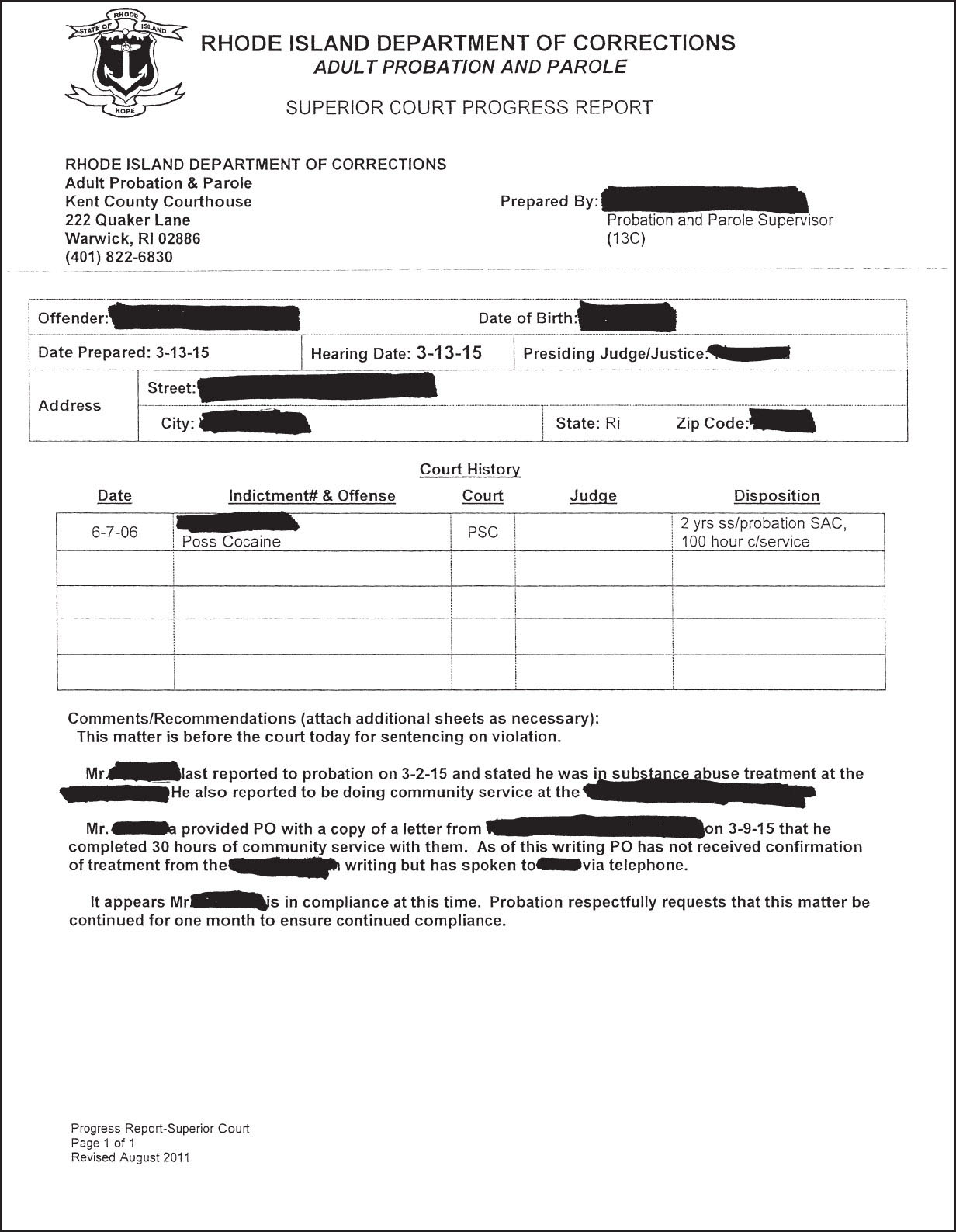
161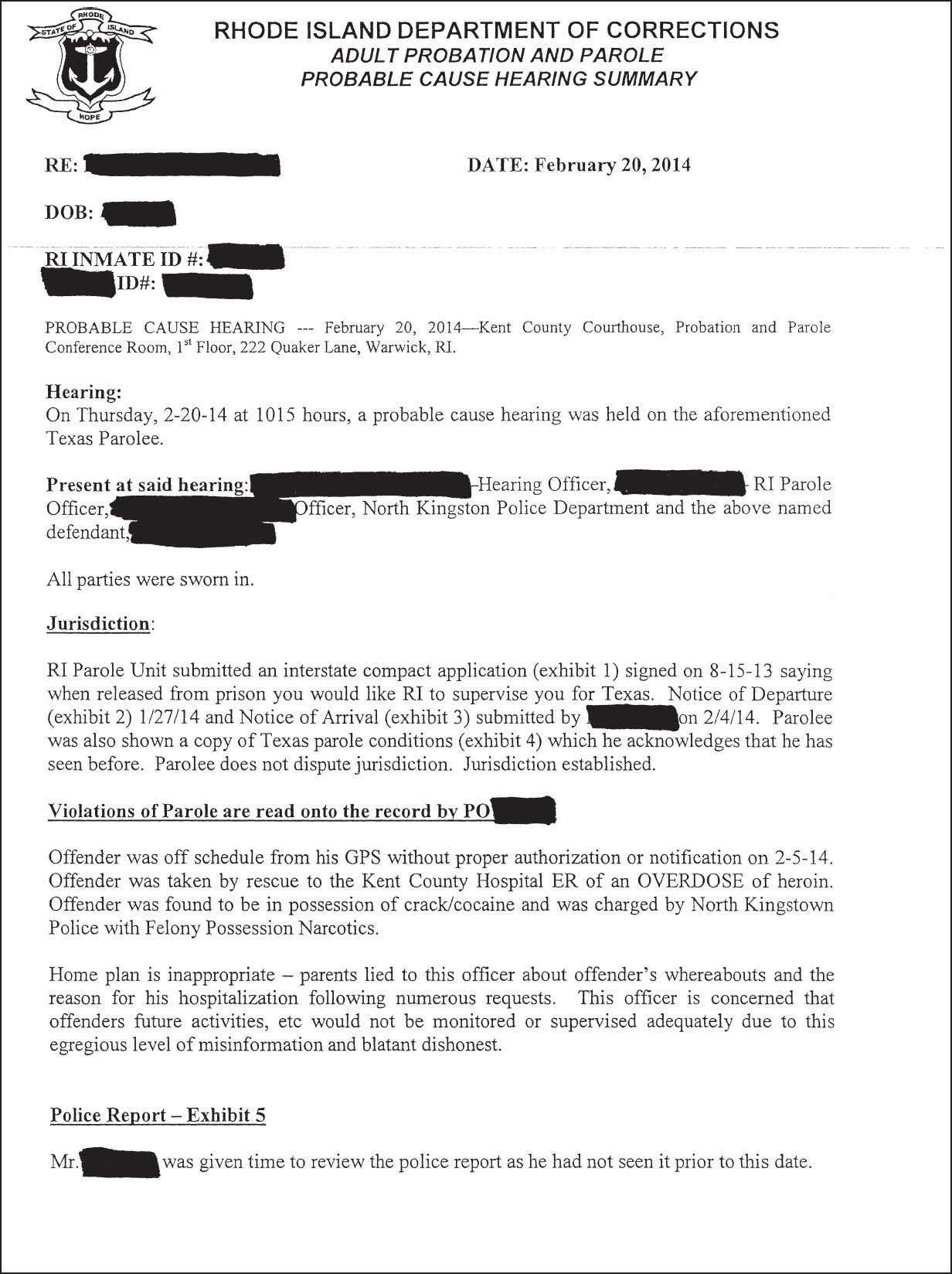
162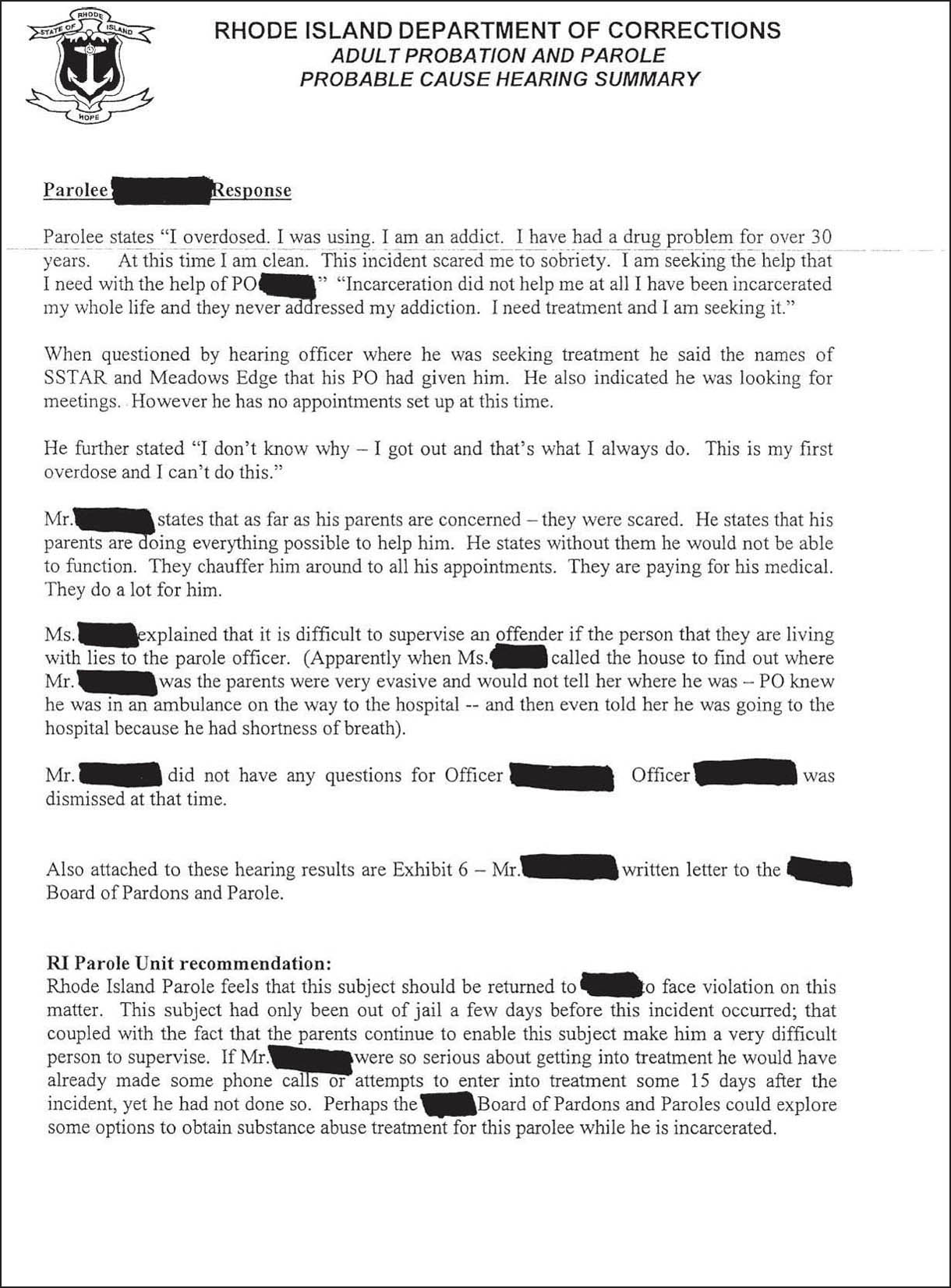
163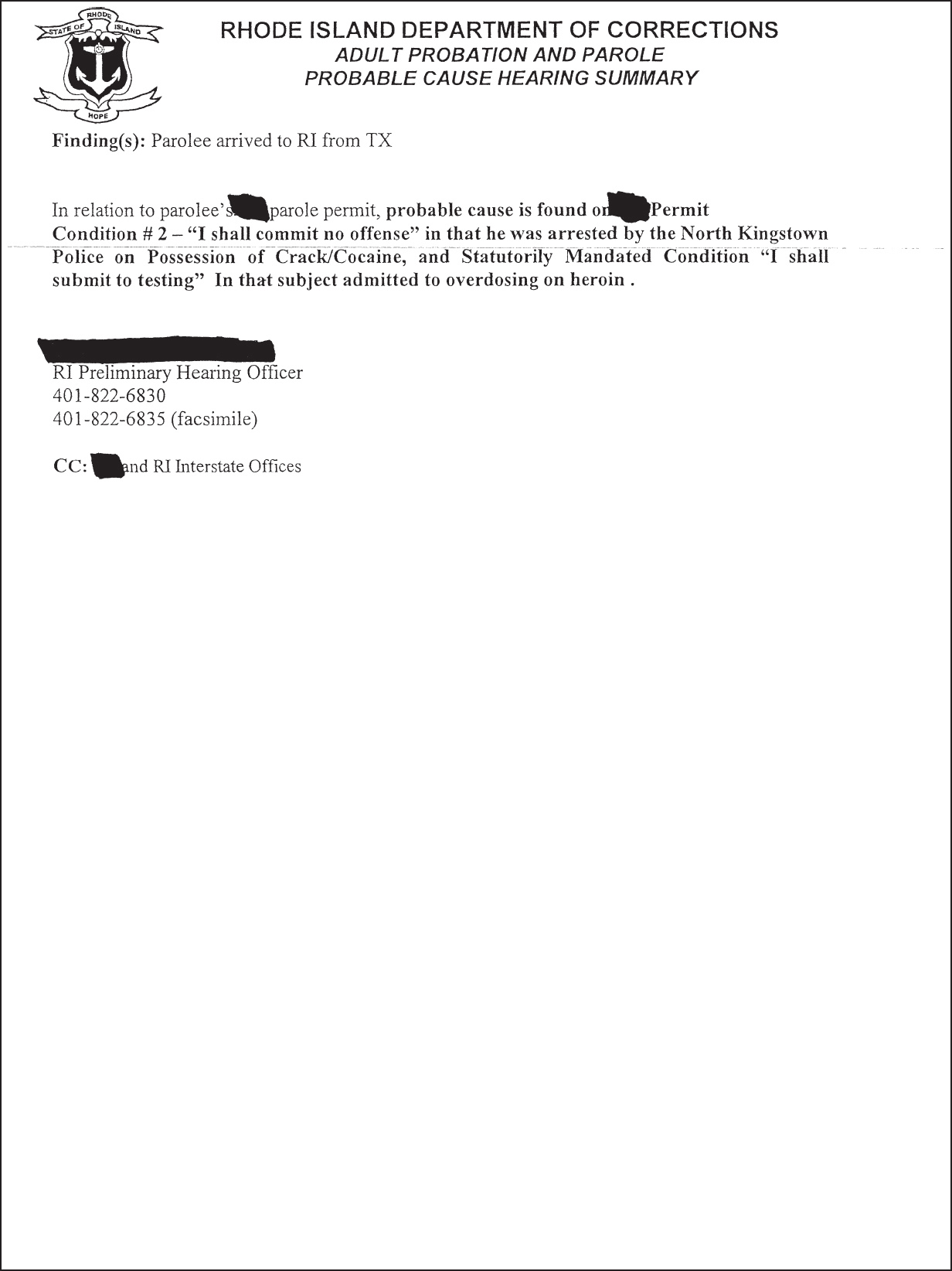
164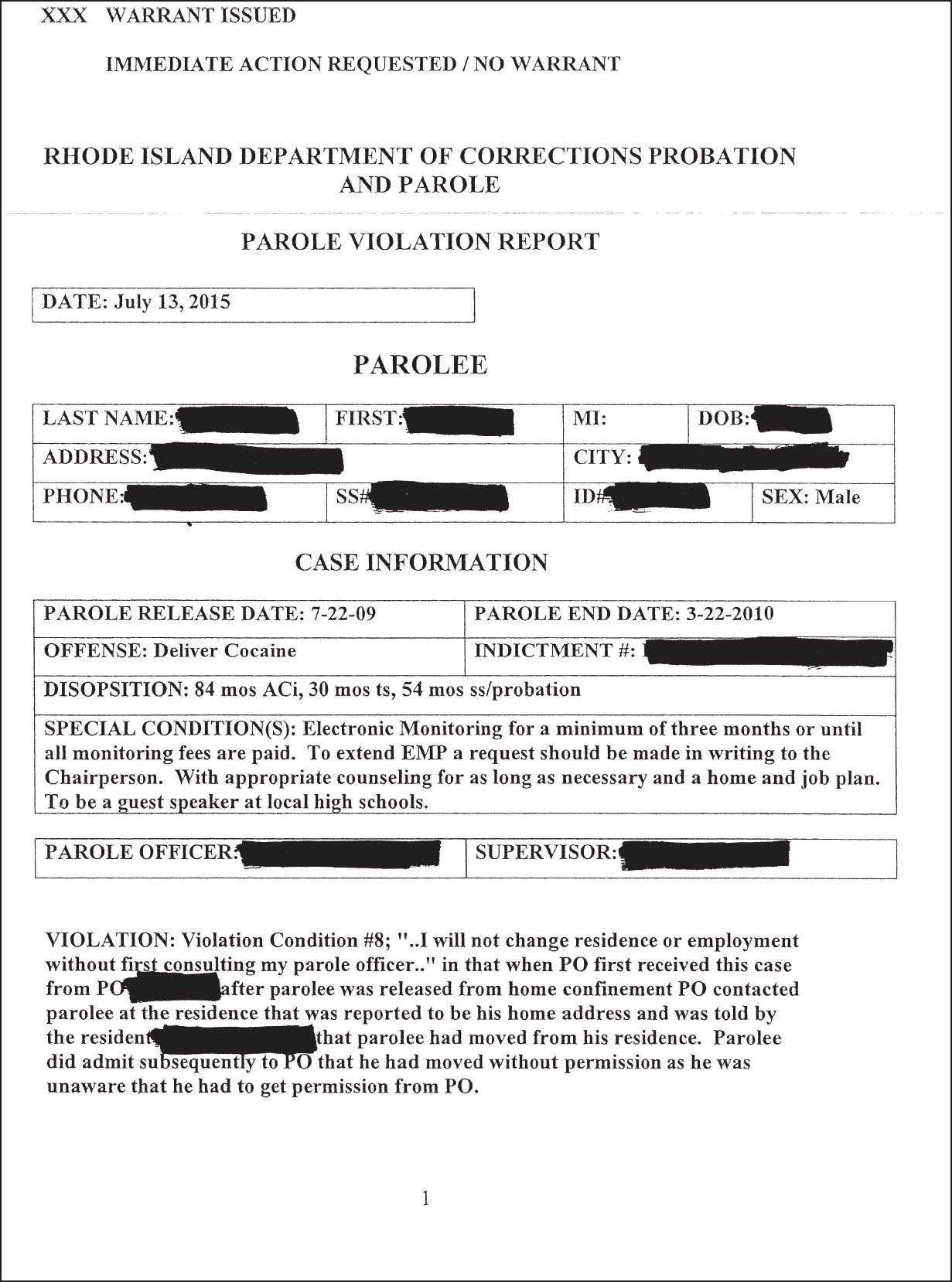
165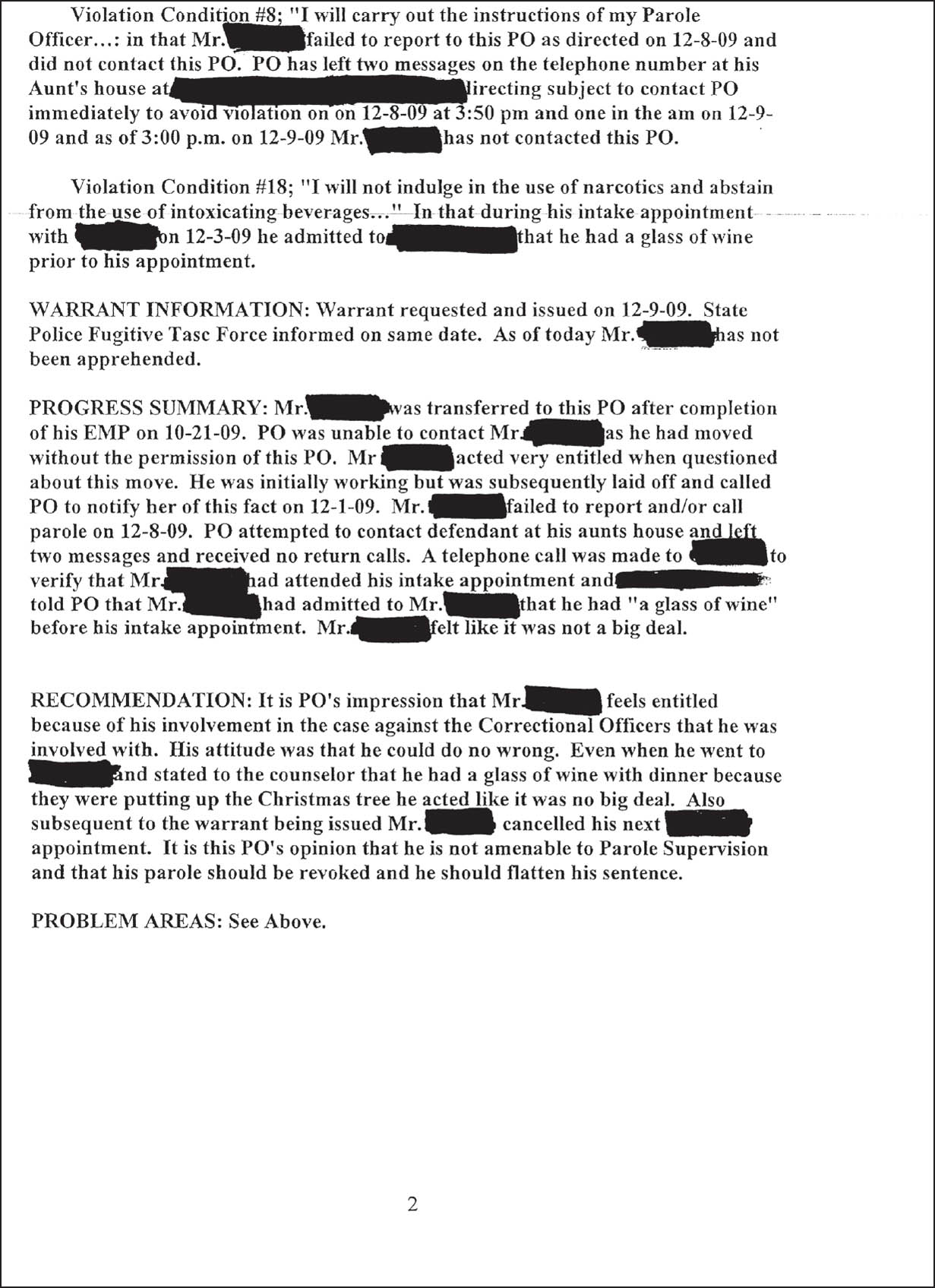
166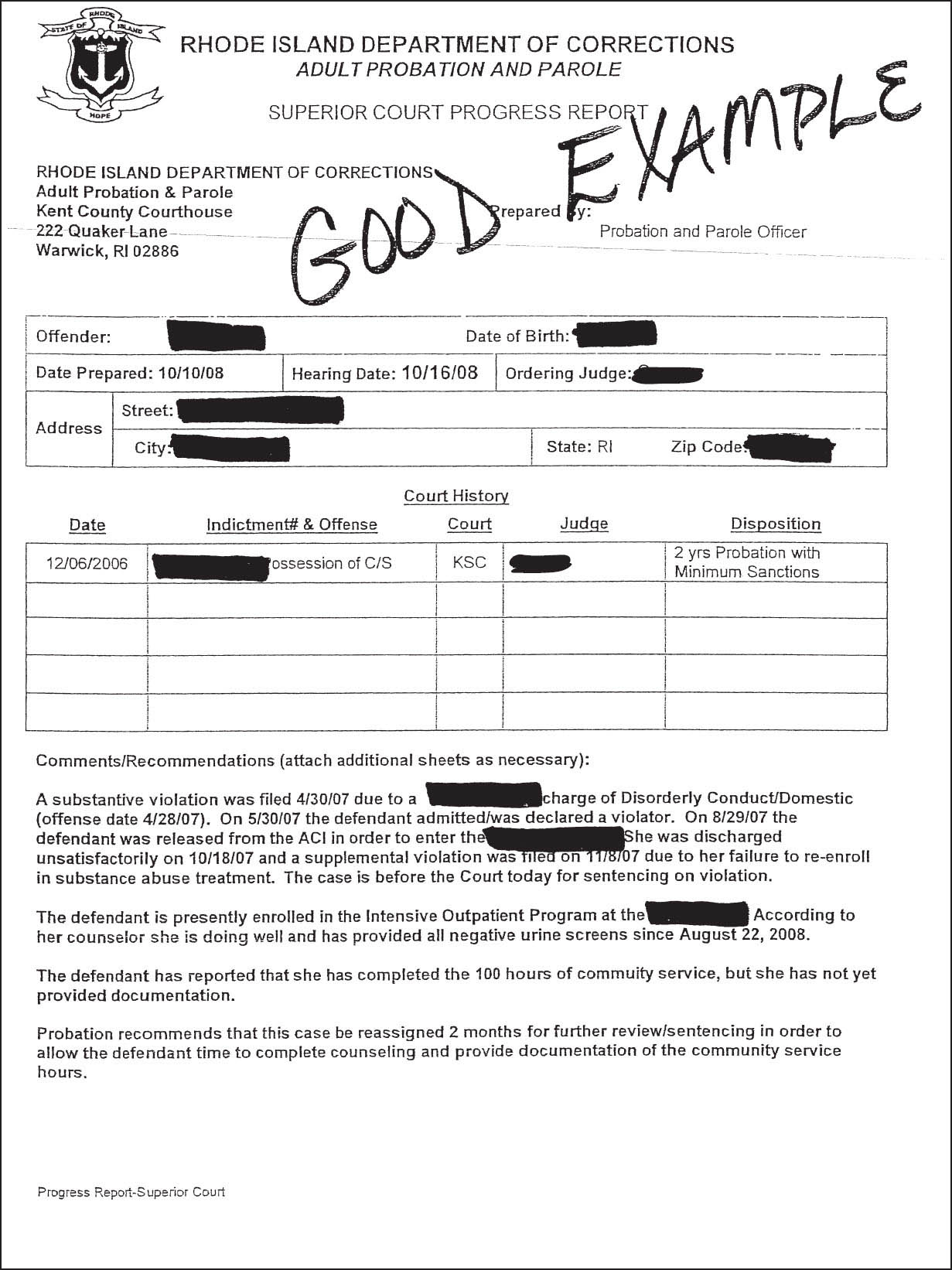
167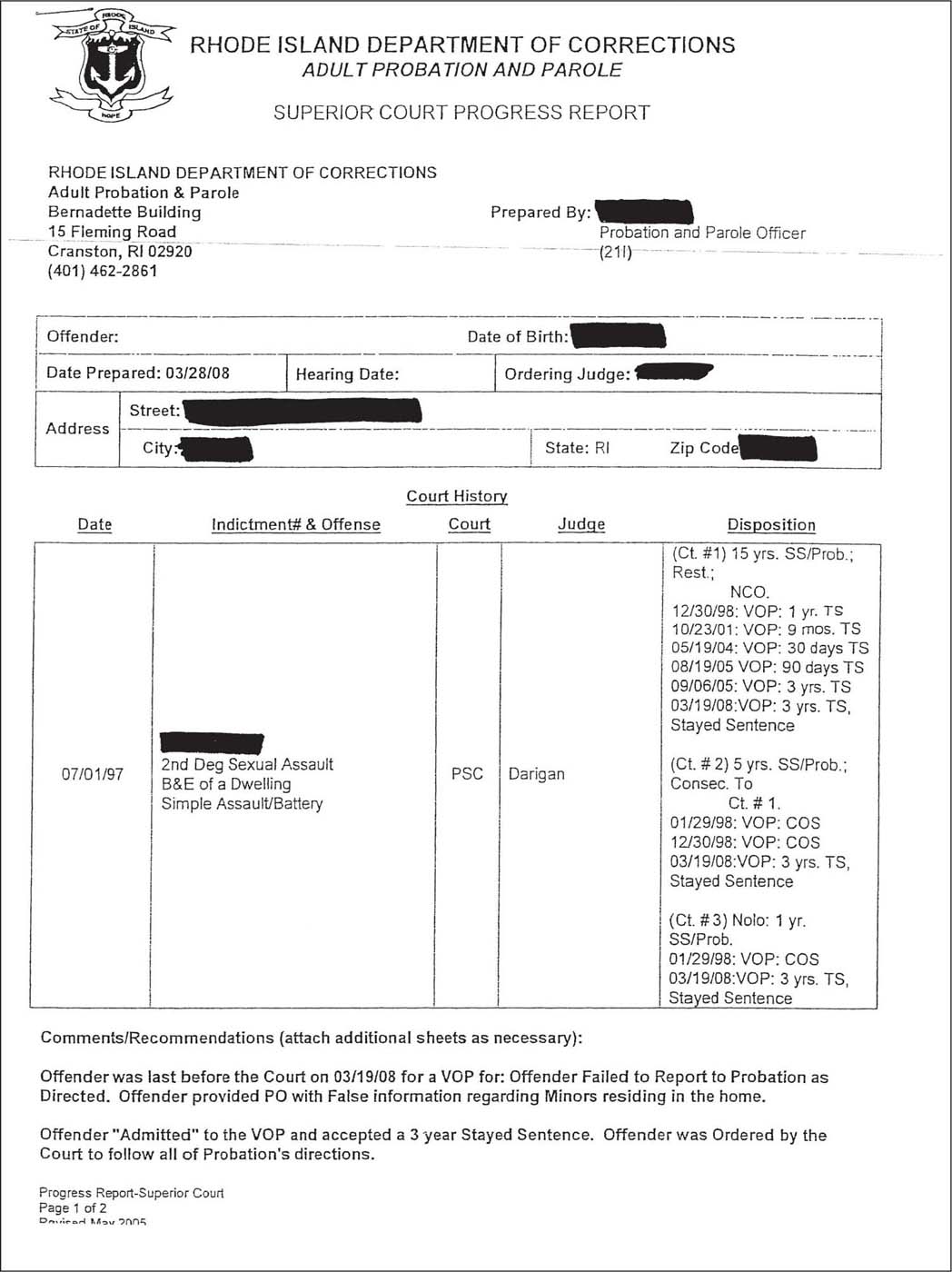
168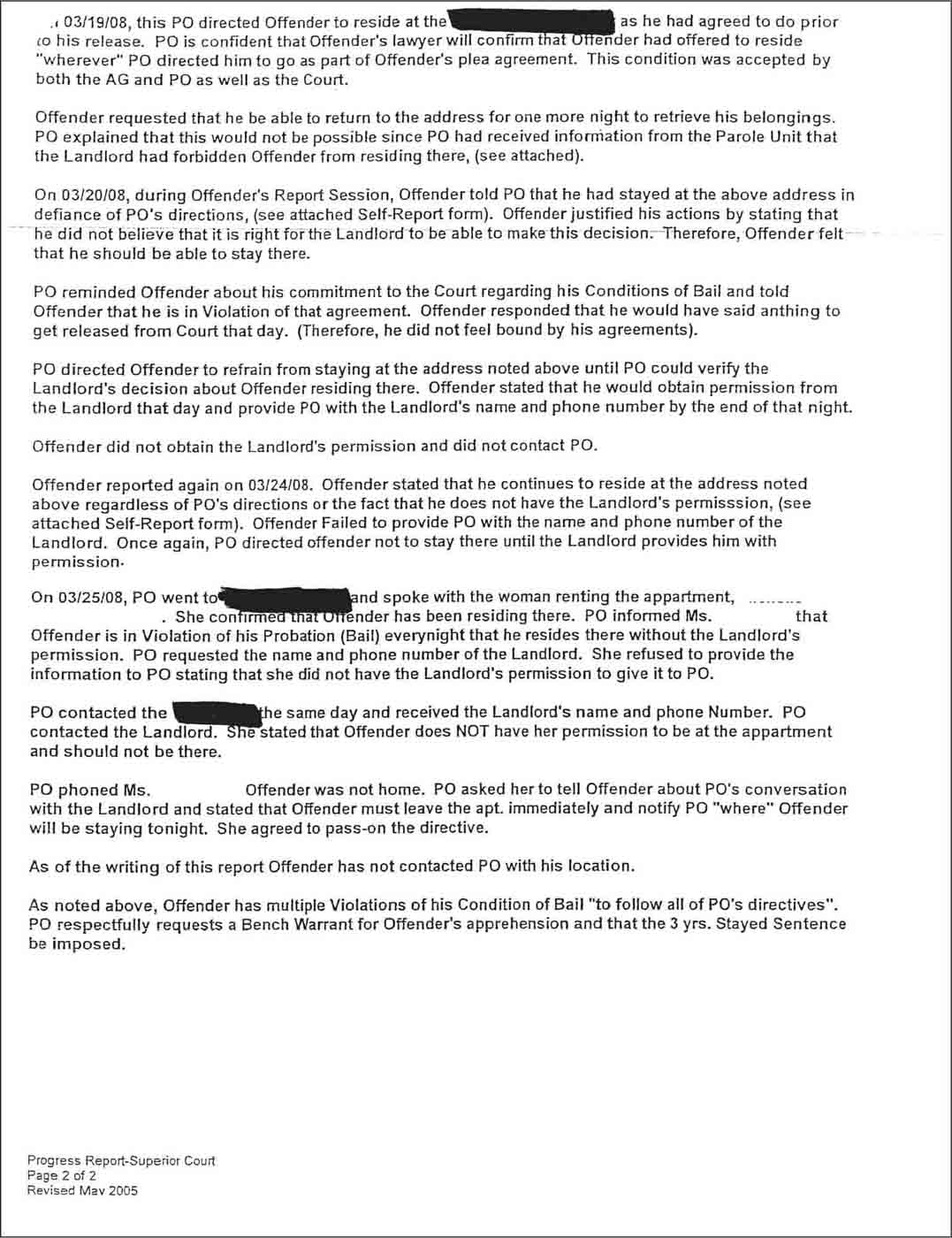
169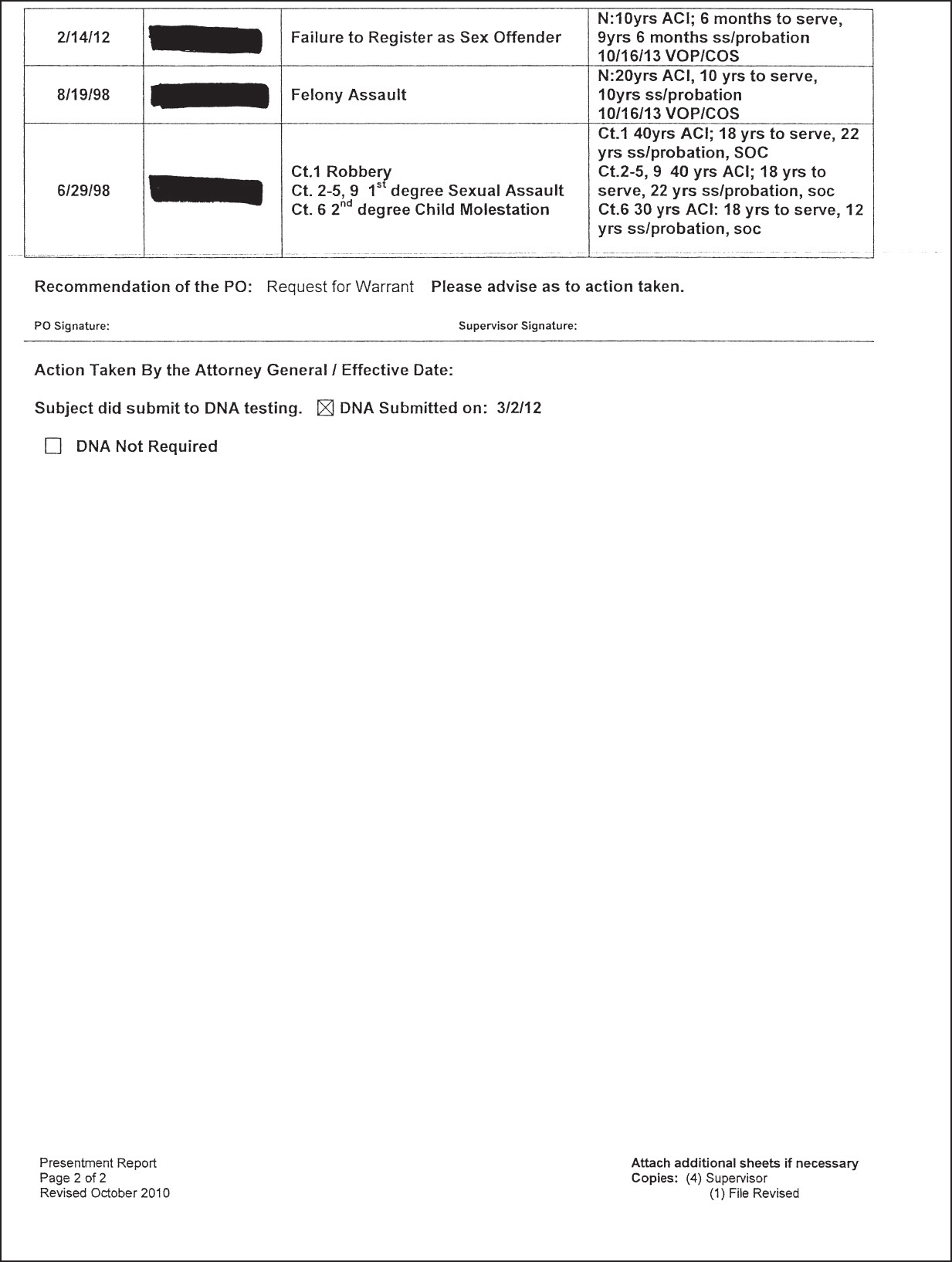
170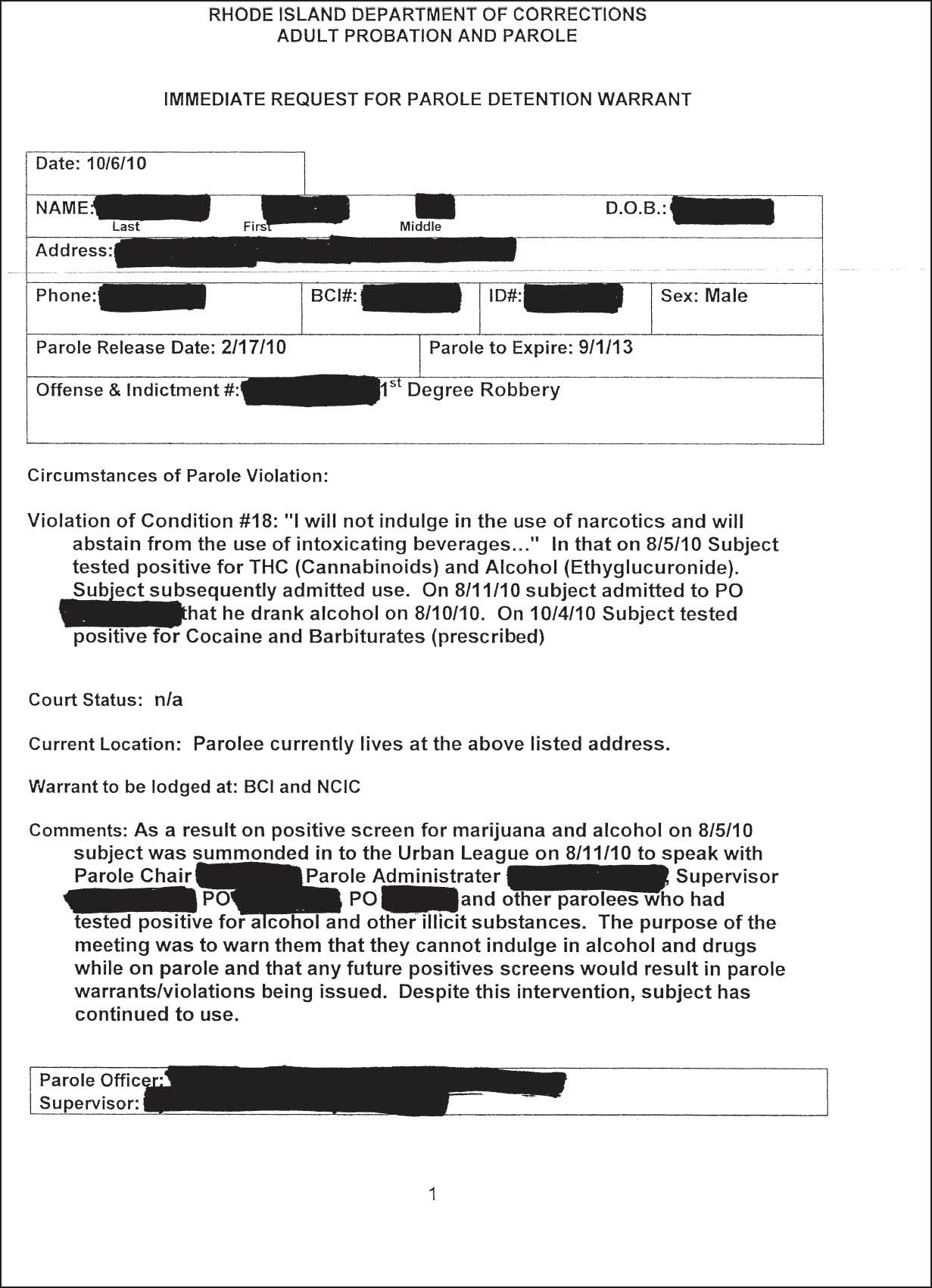
171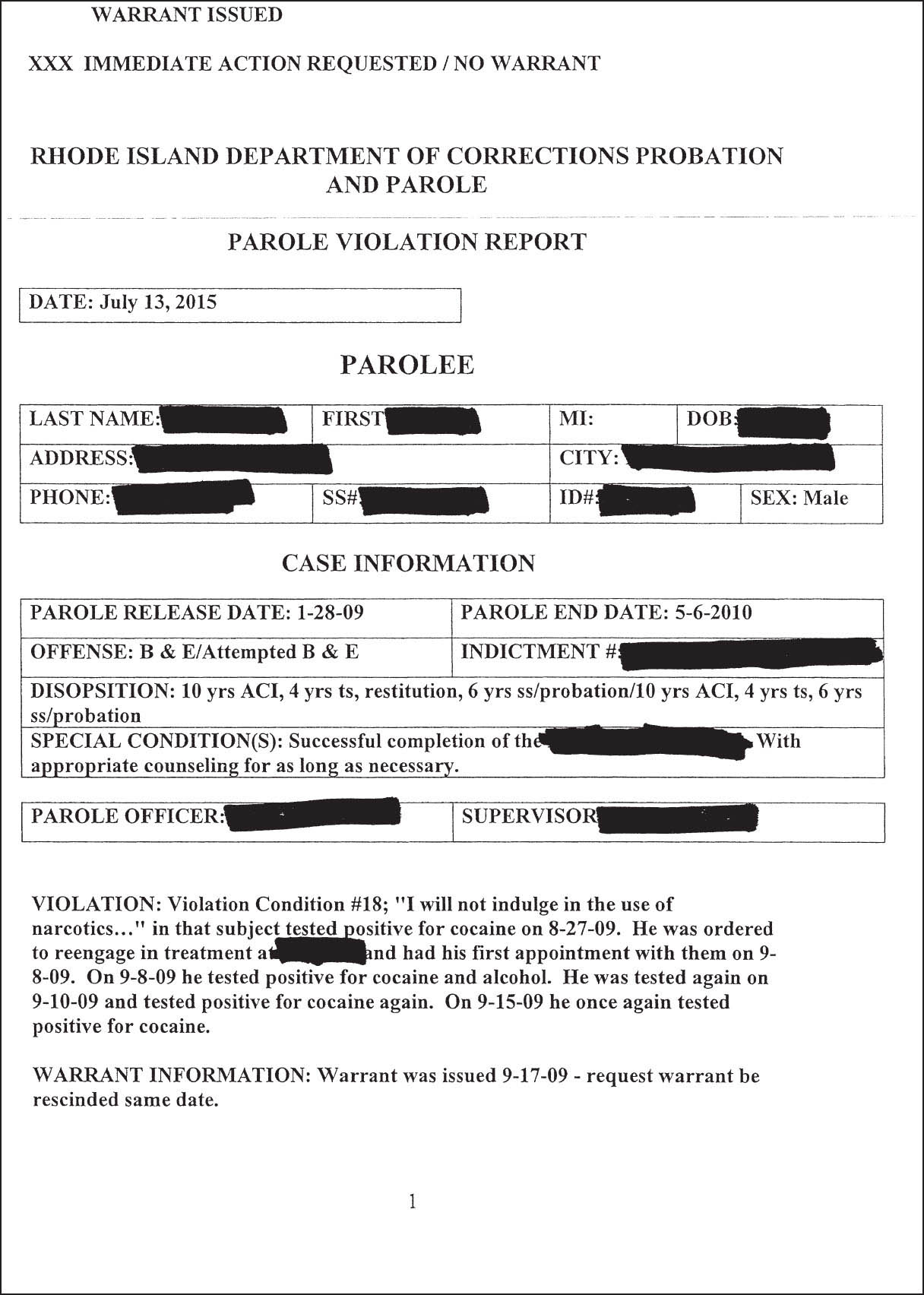
172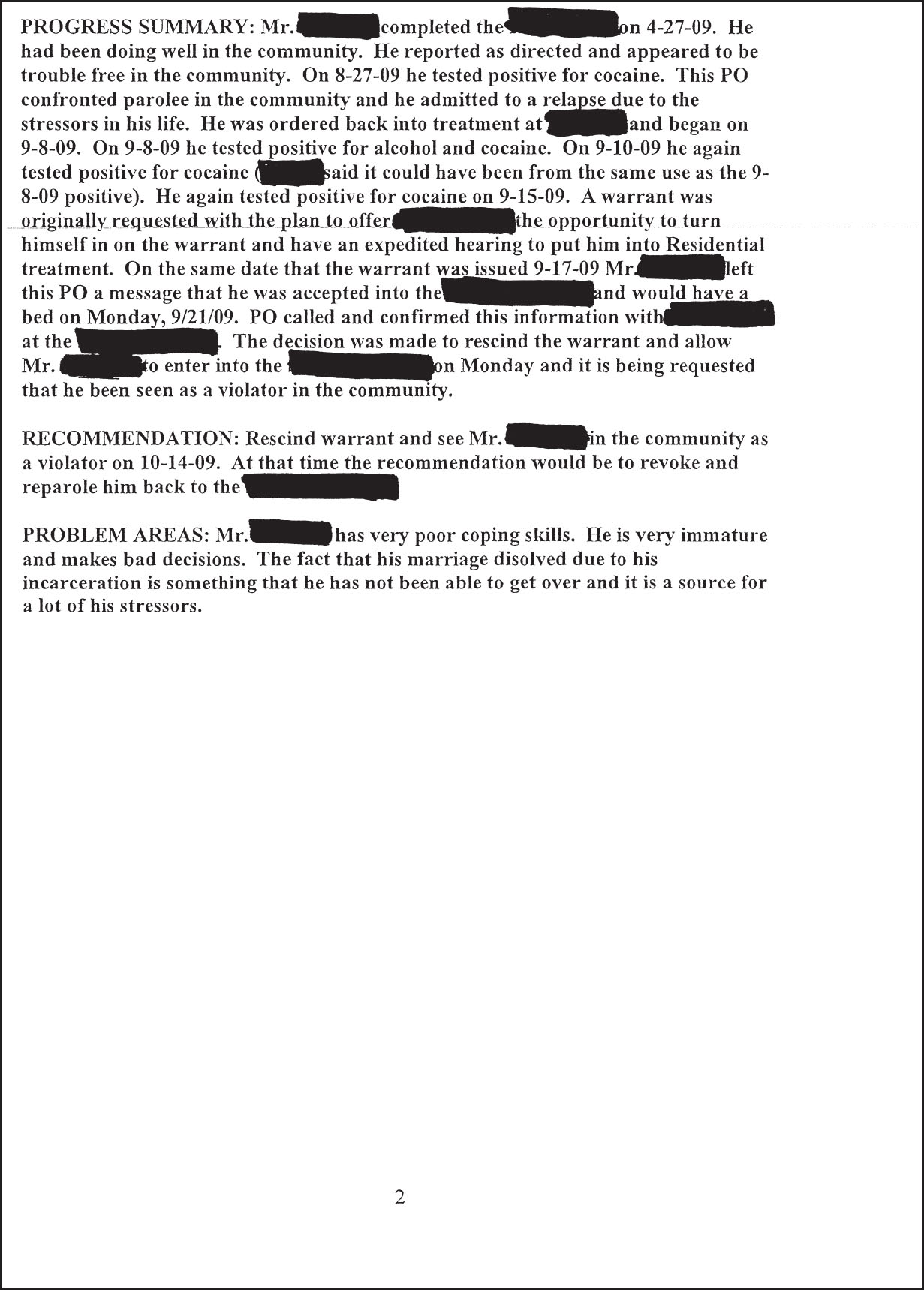
173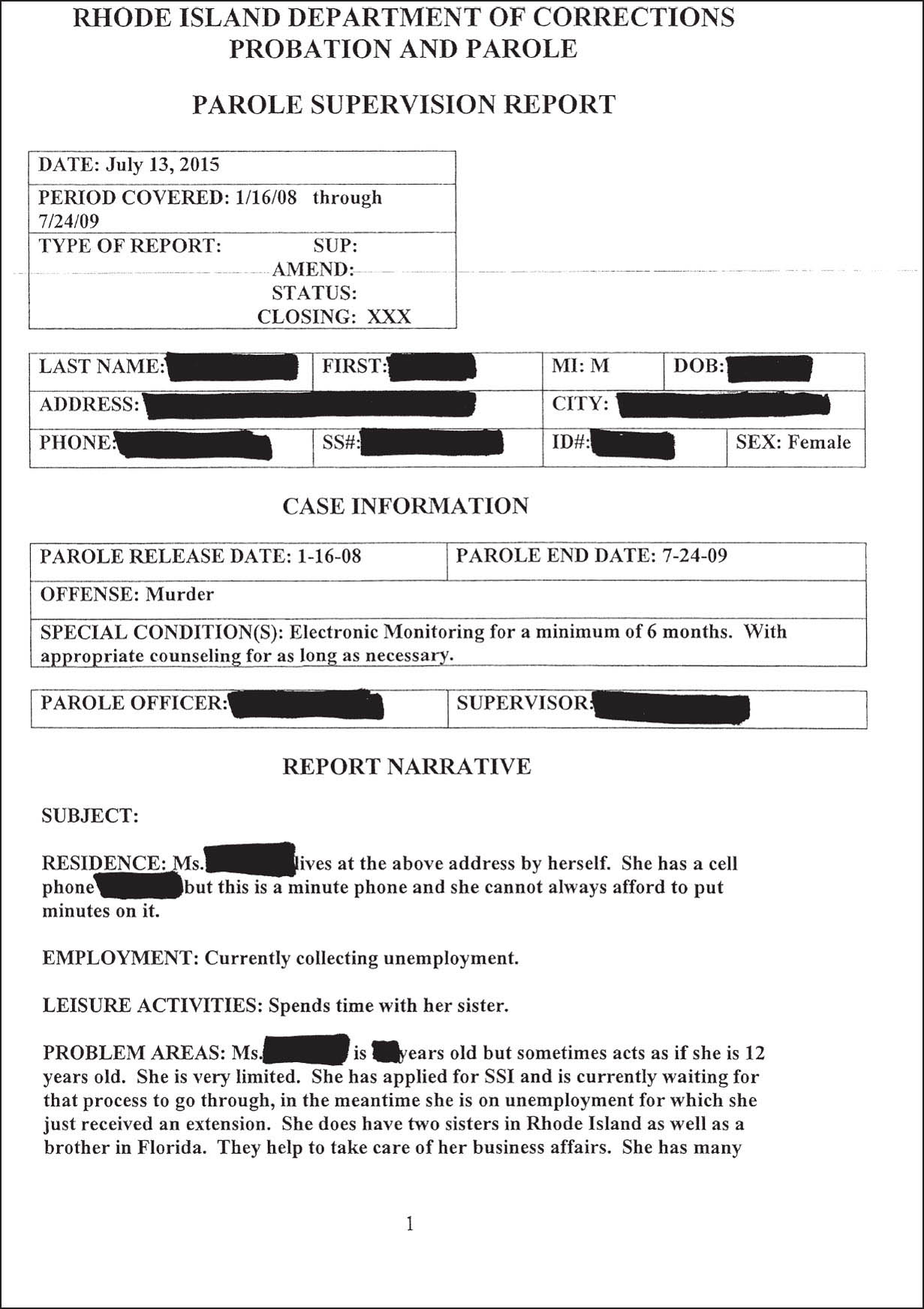
174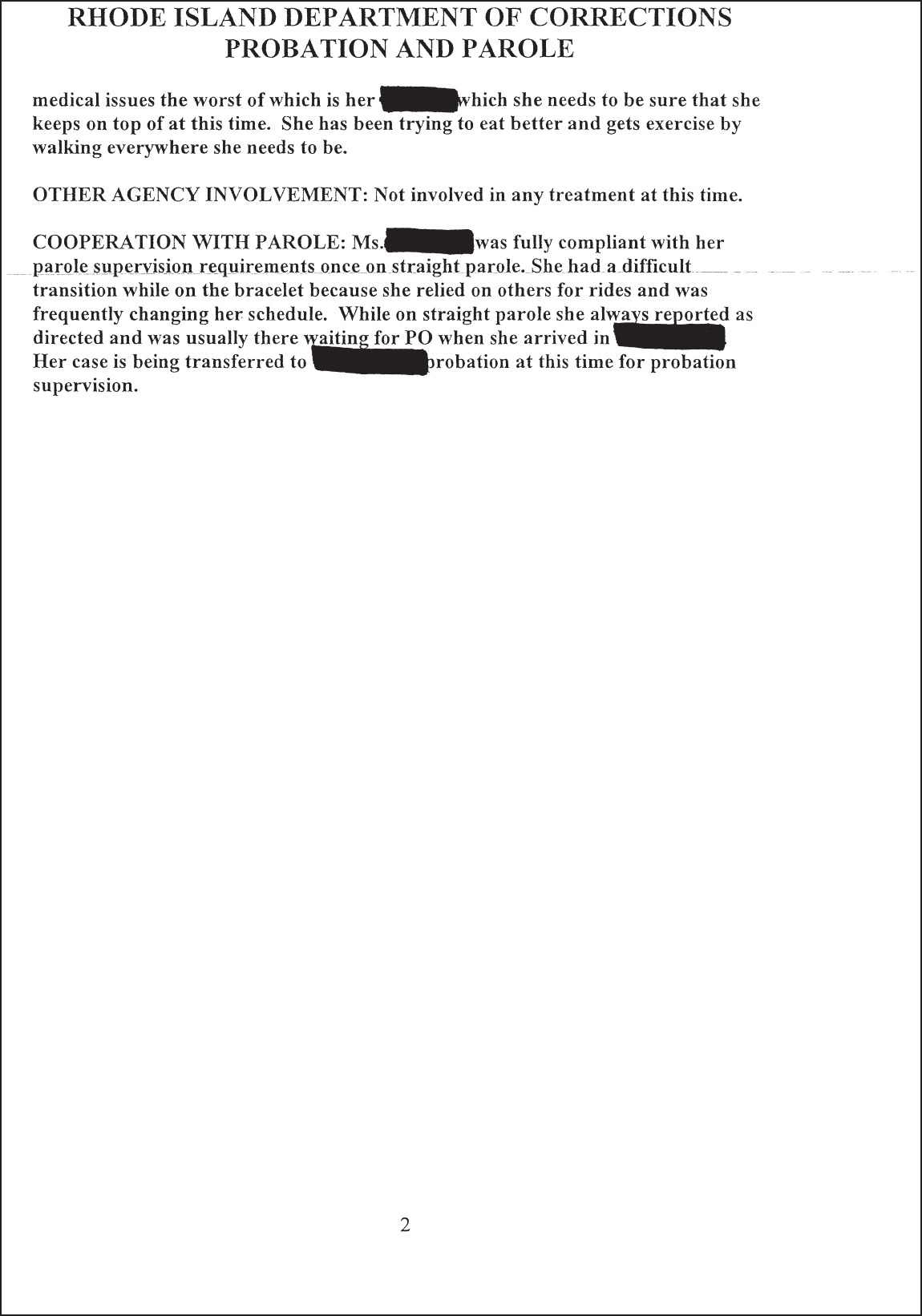
175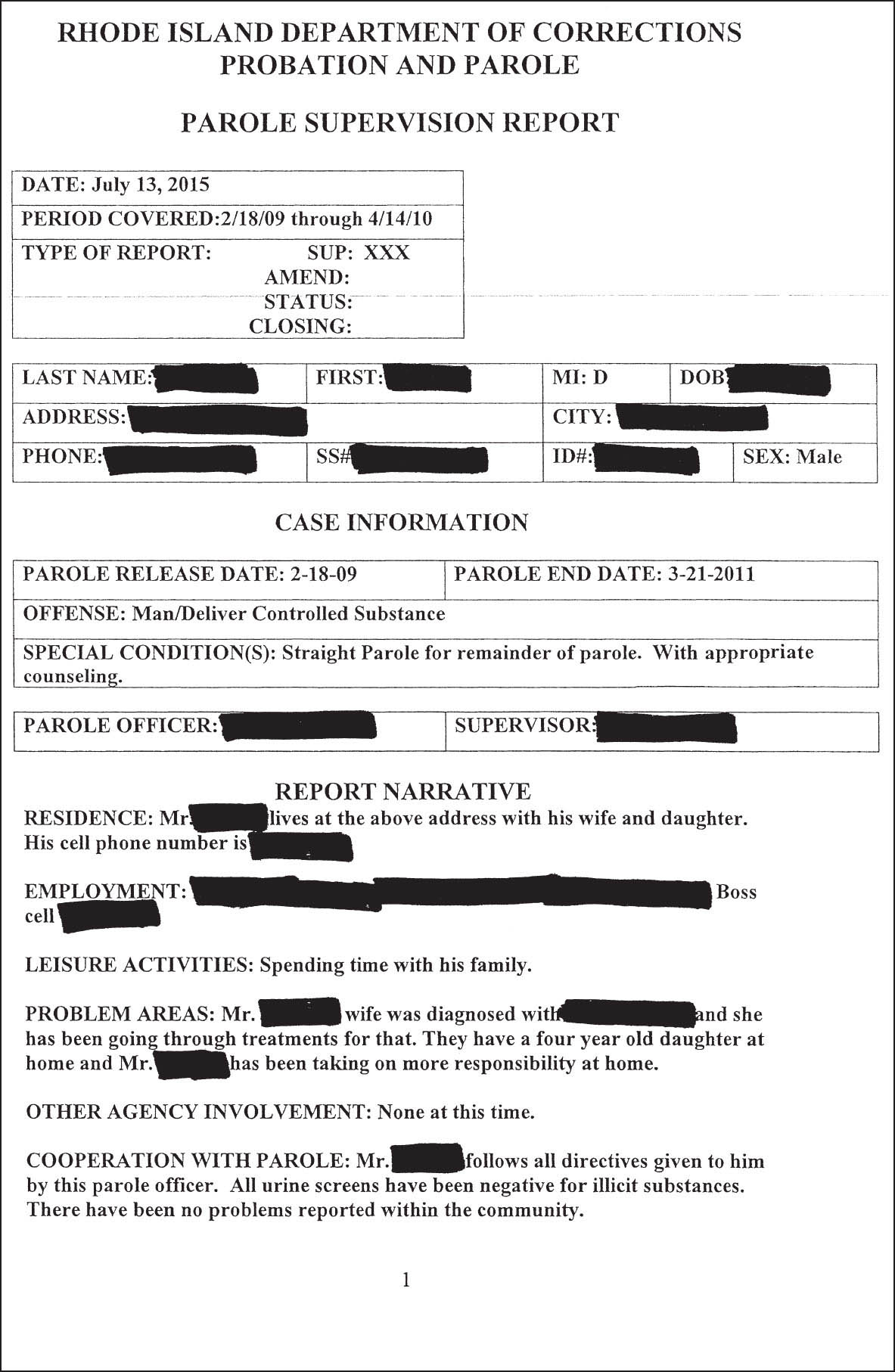
176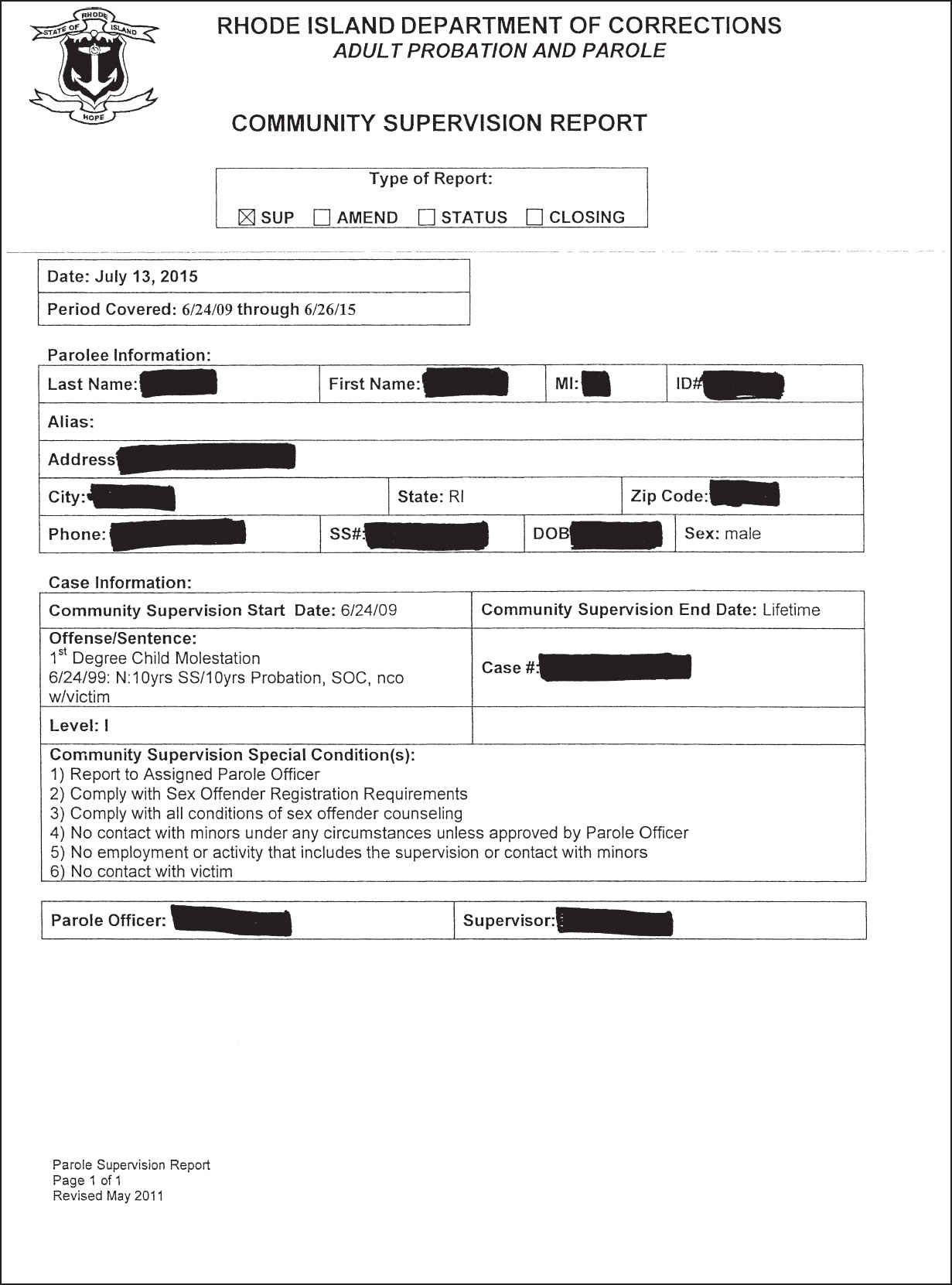
177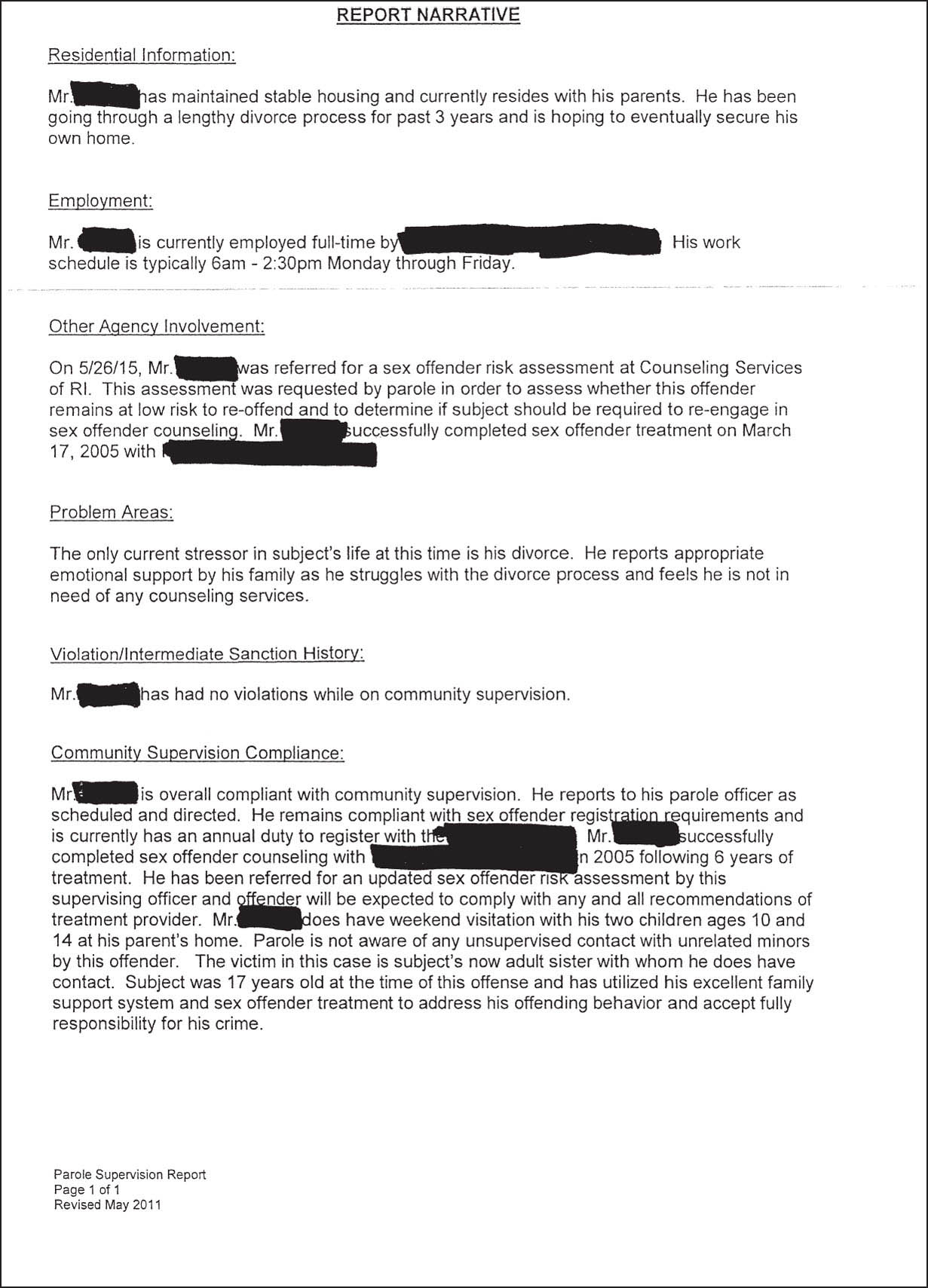
178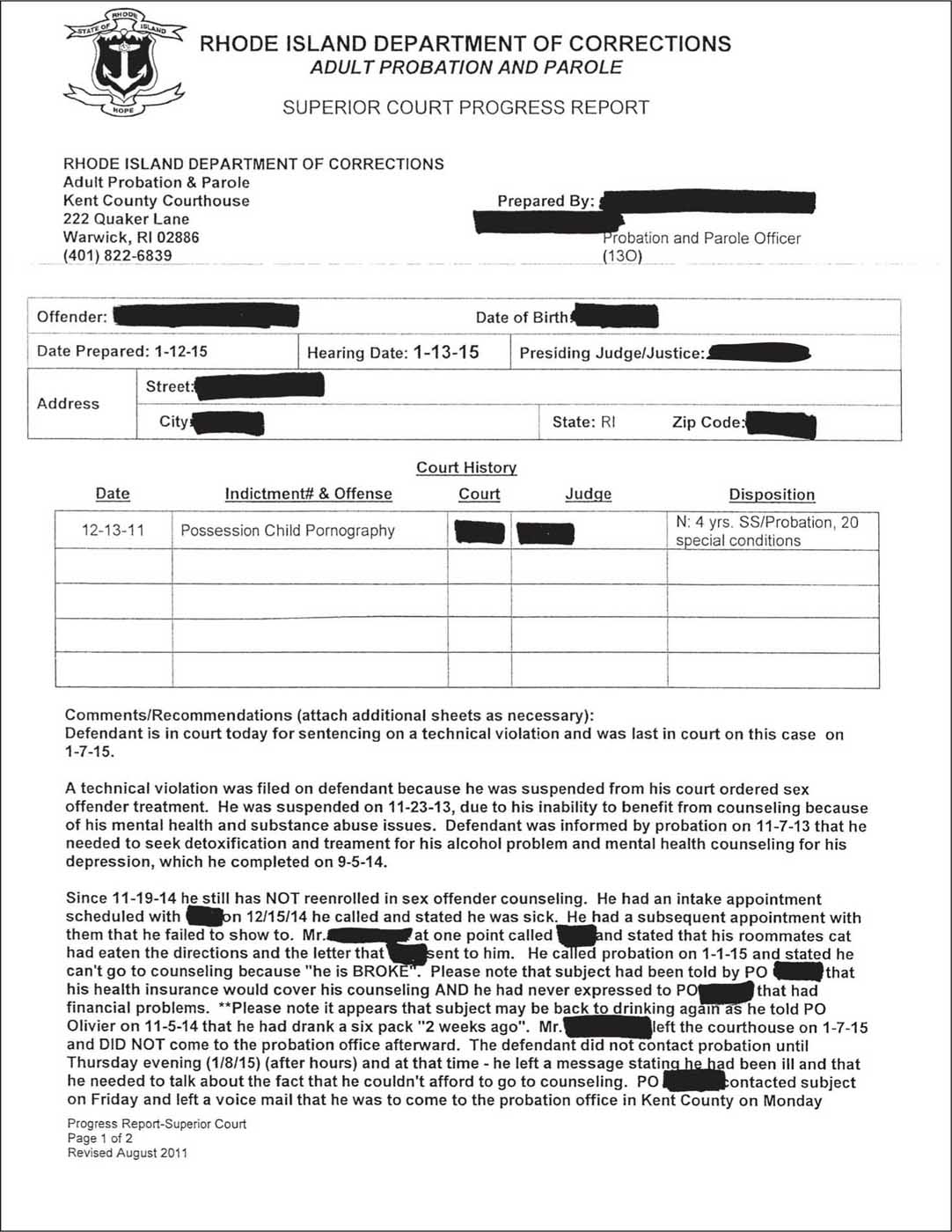
179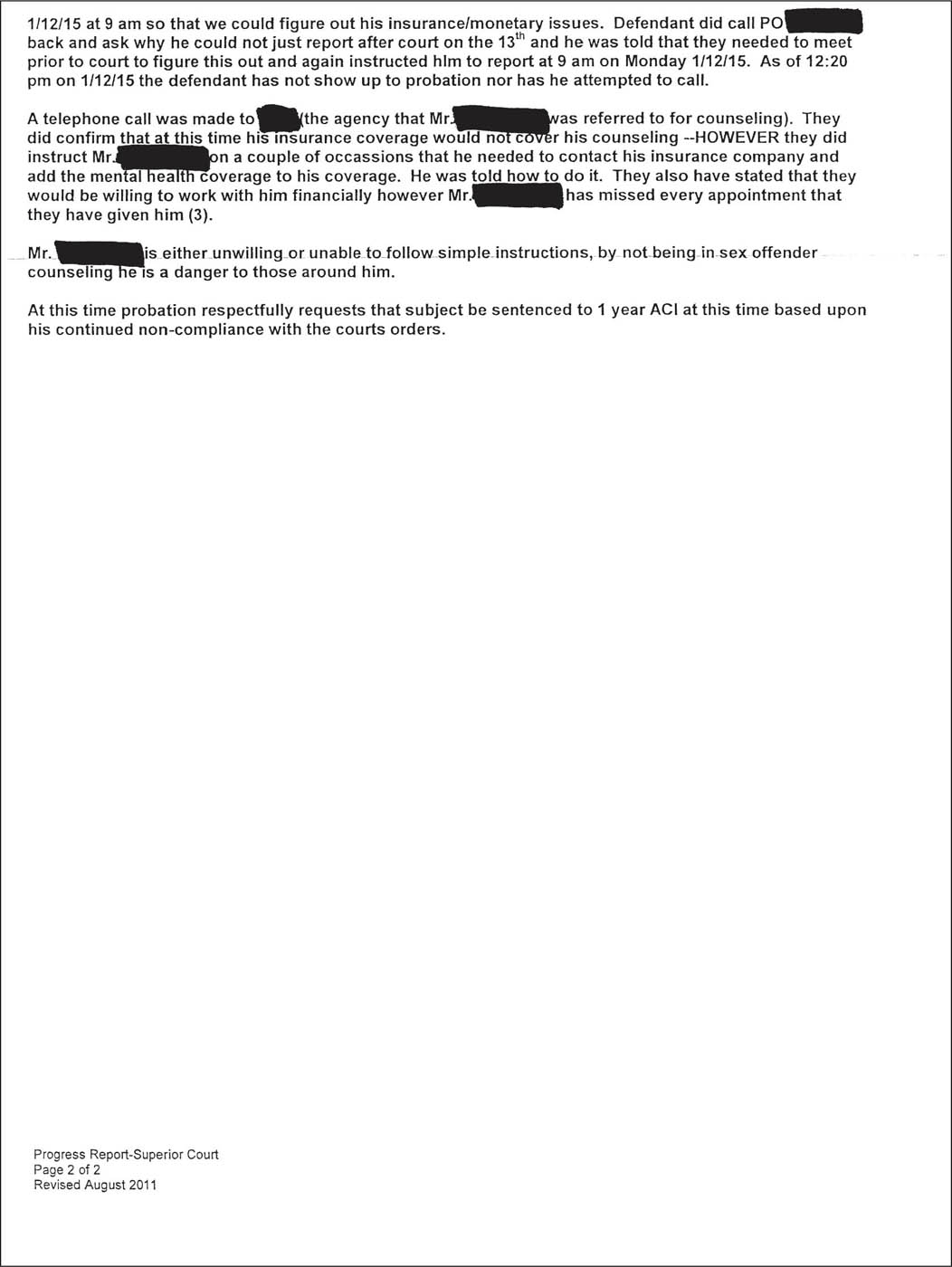
180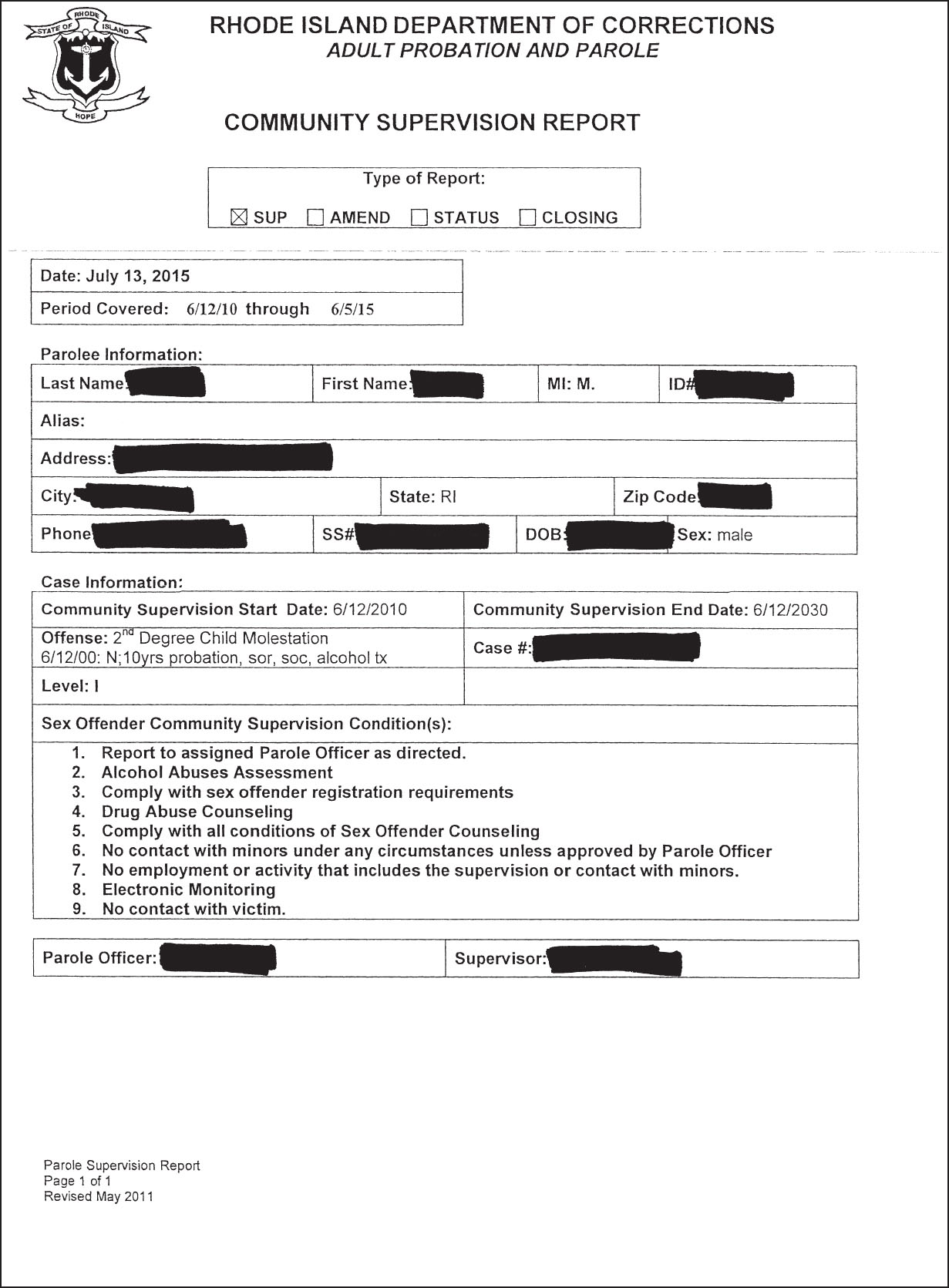
181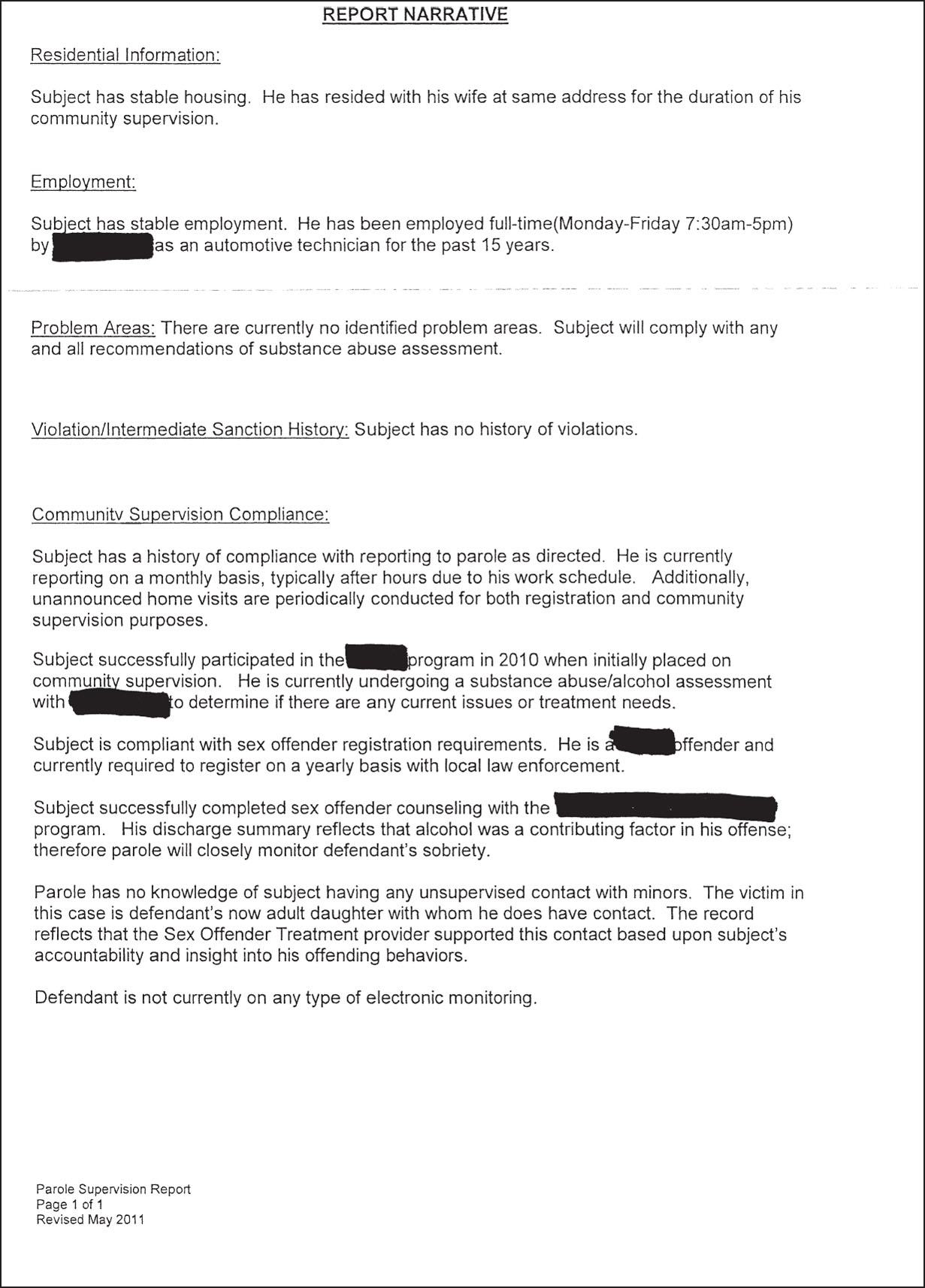
182